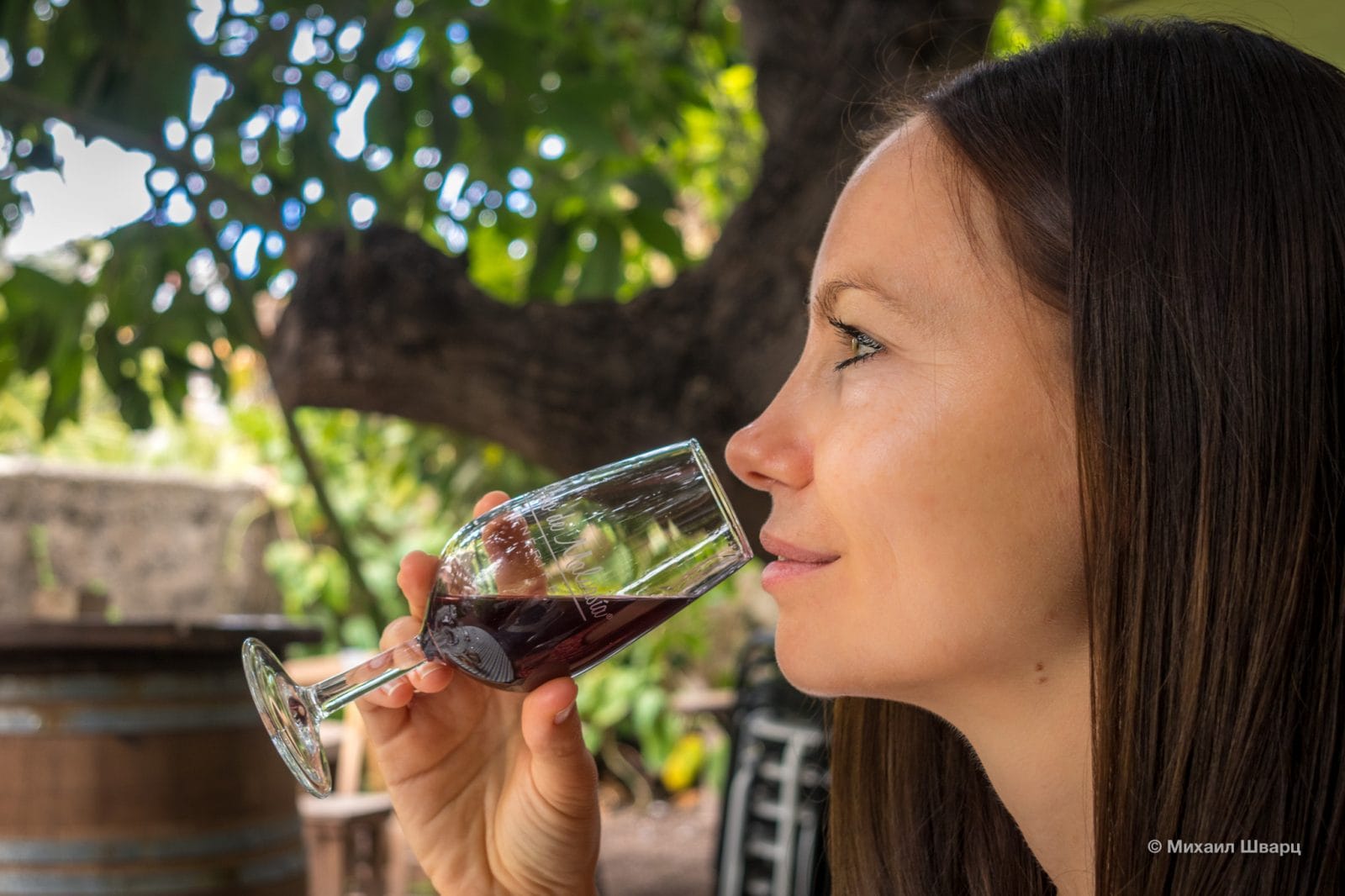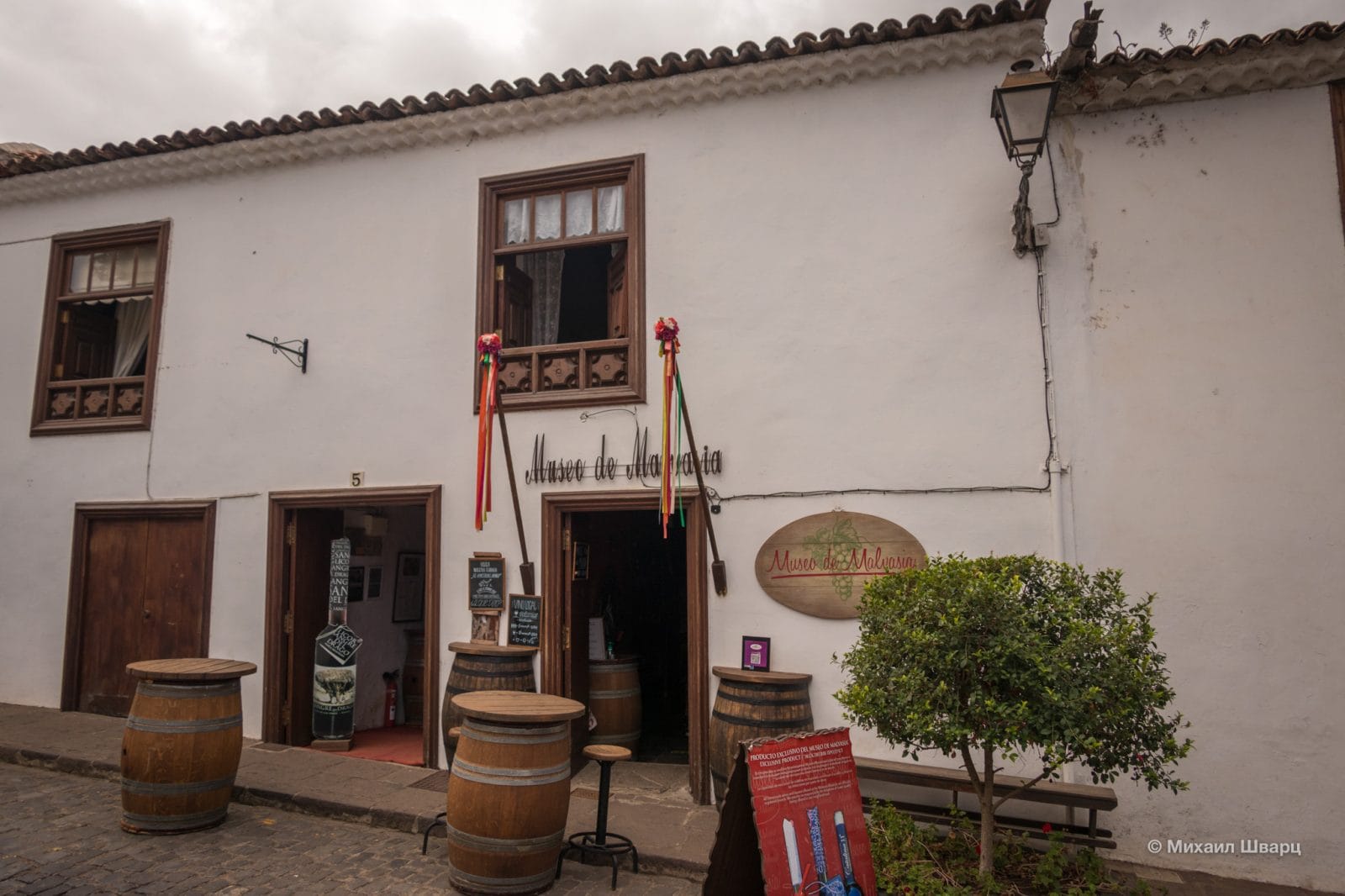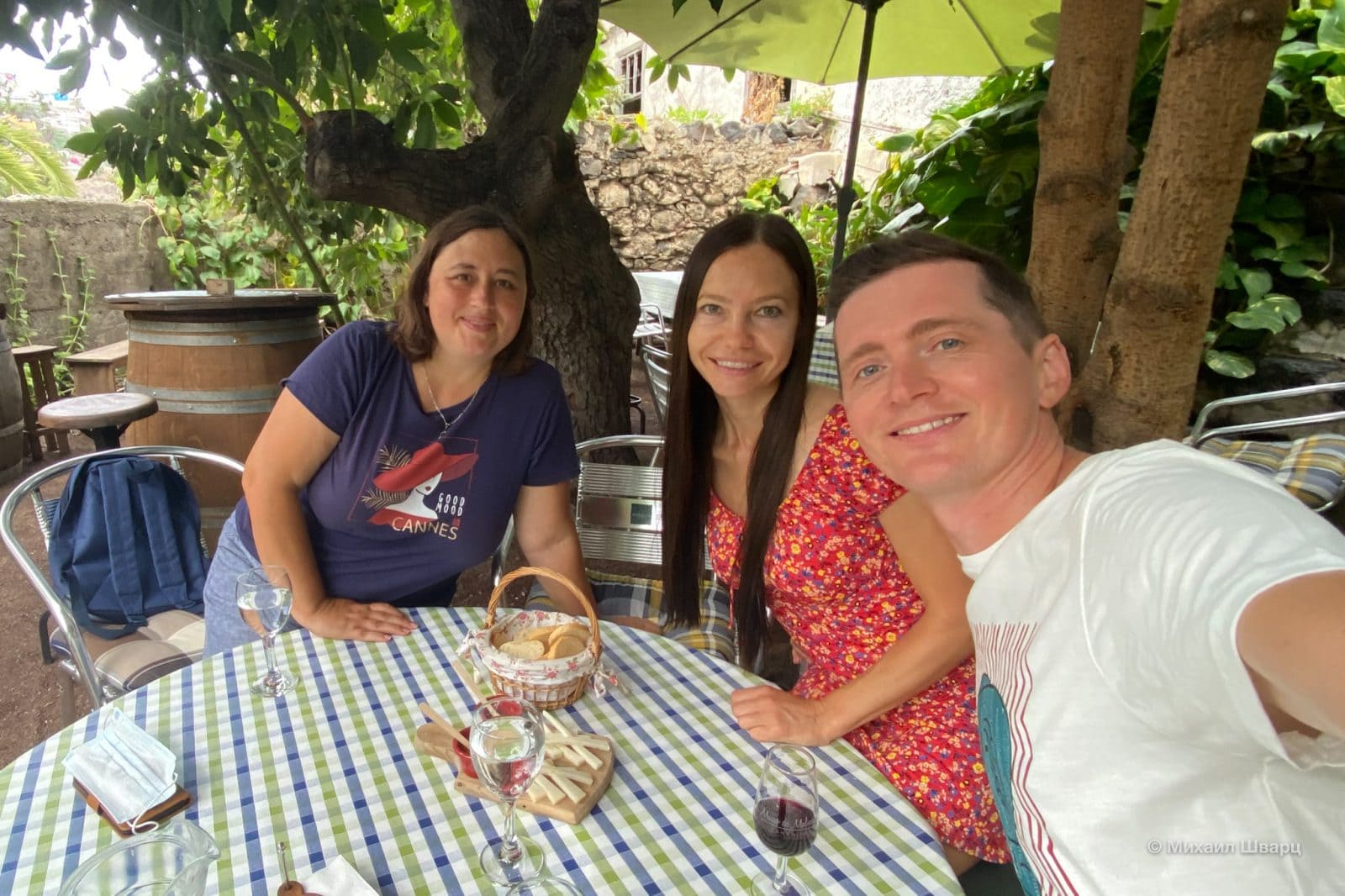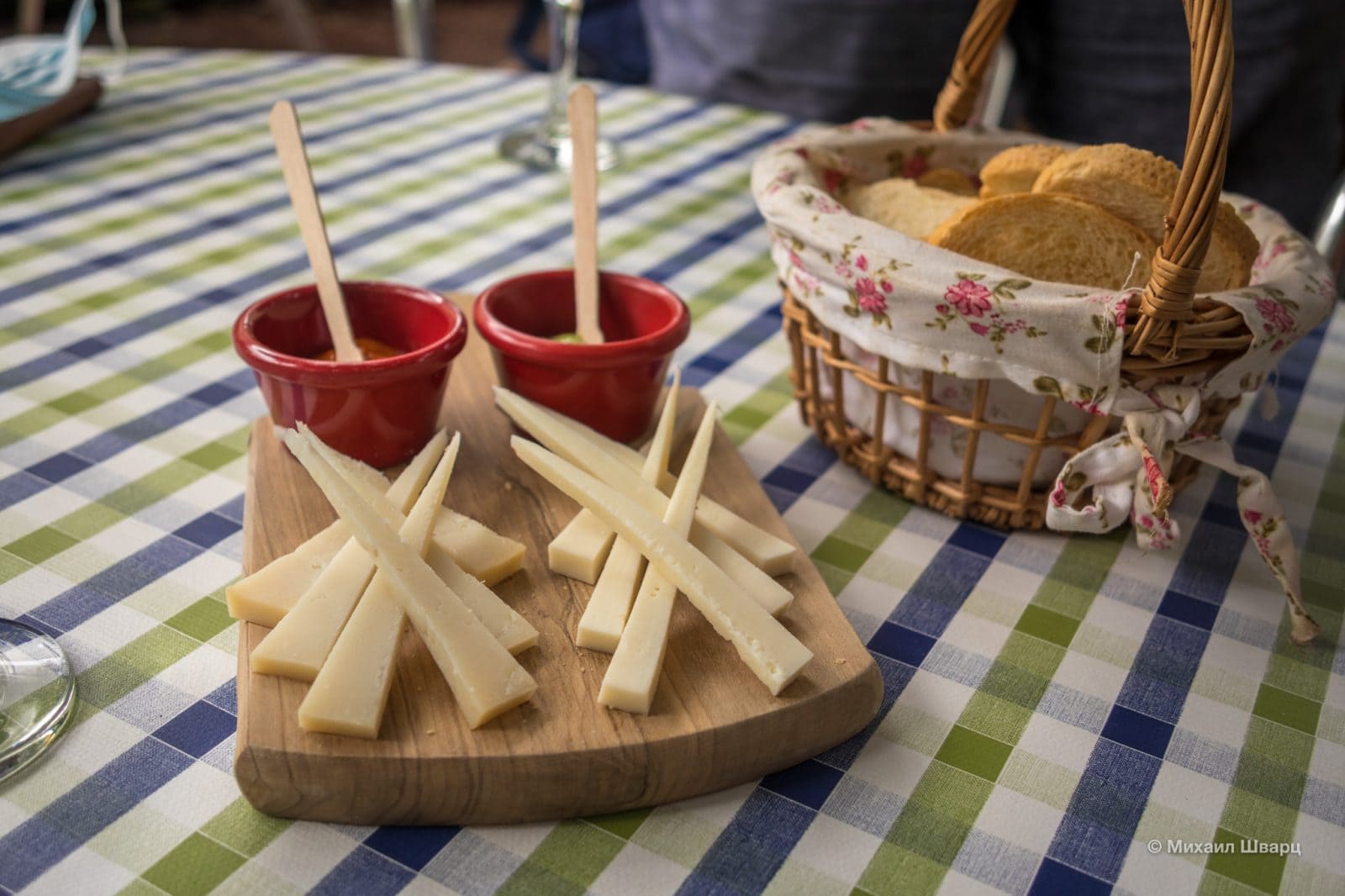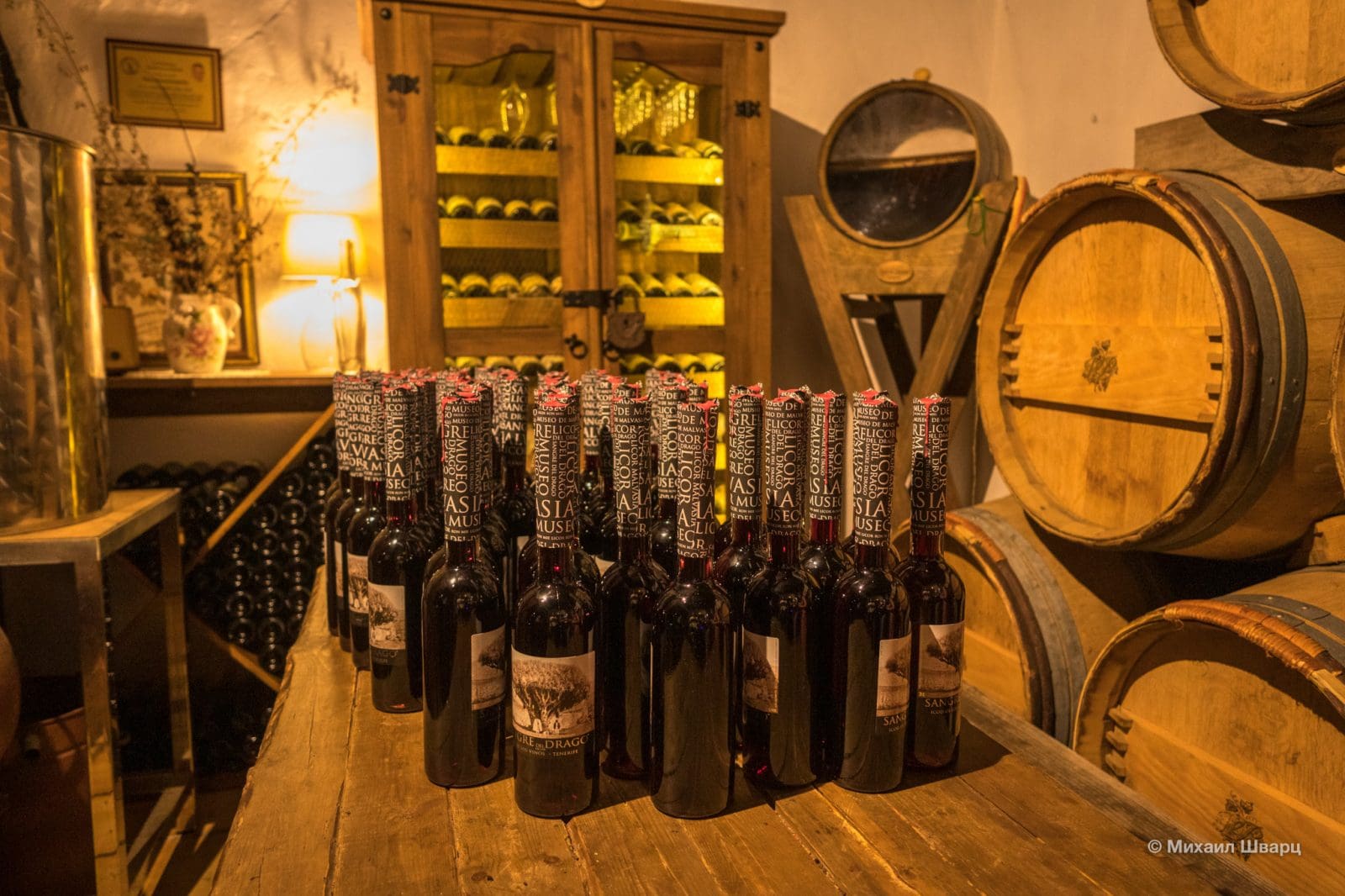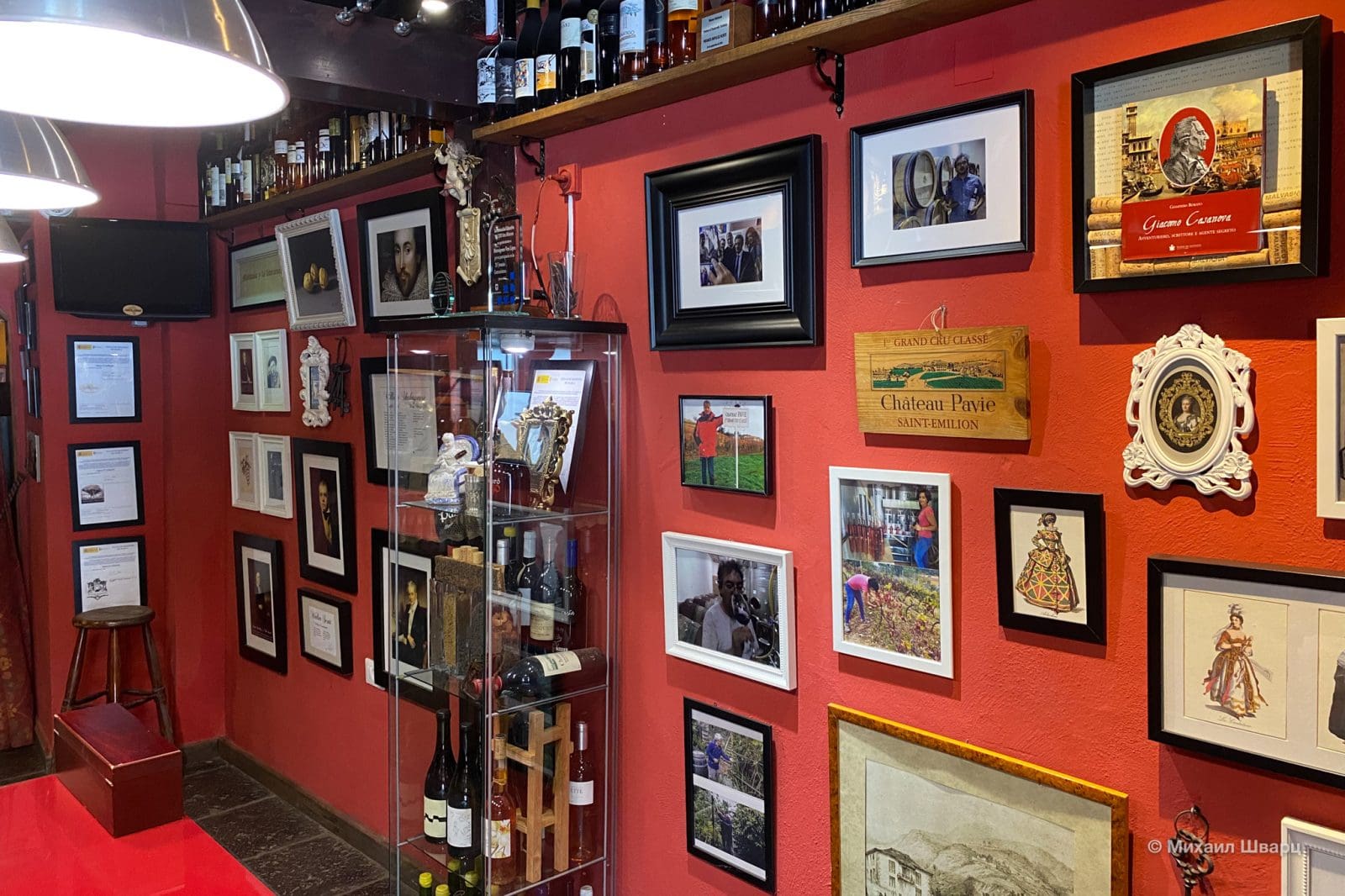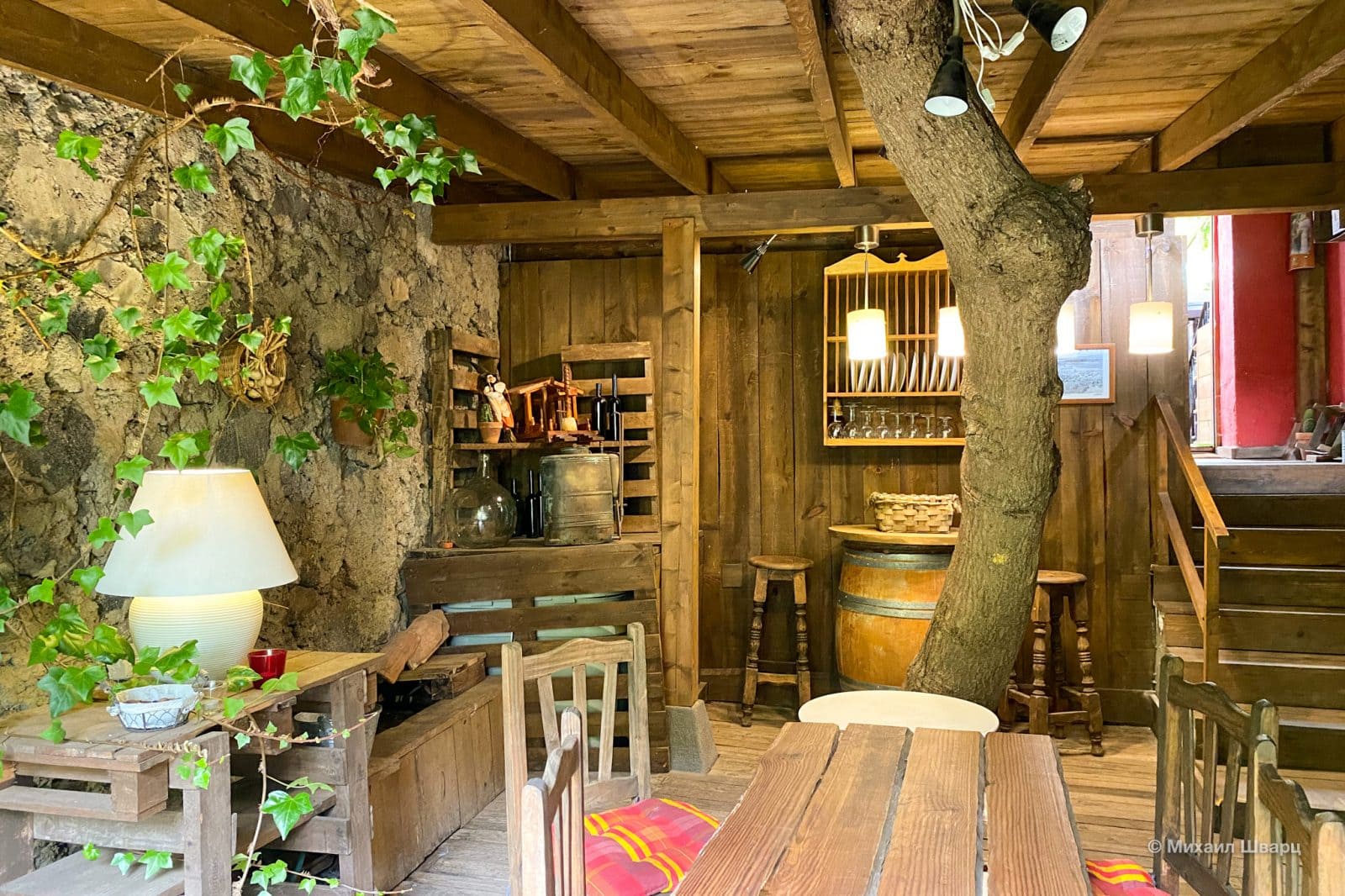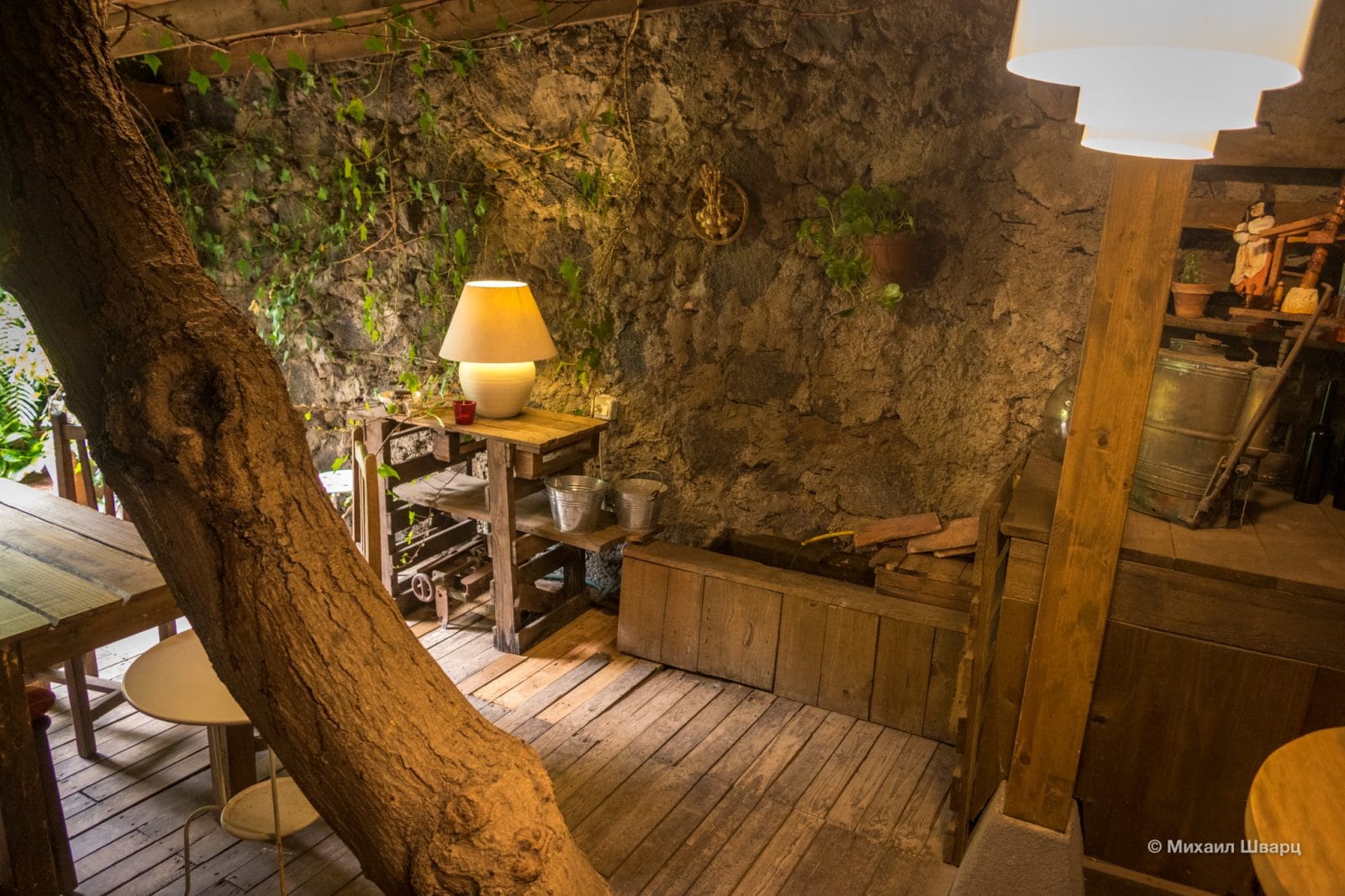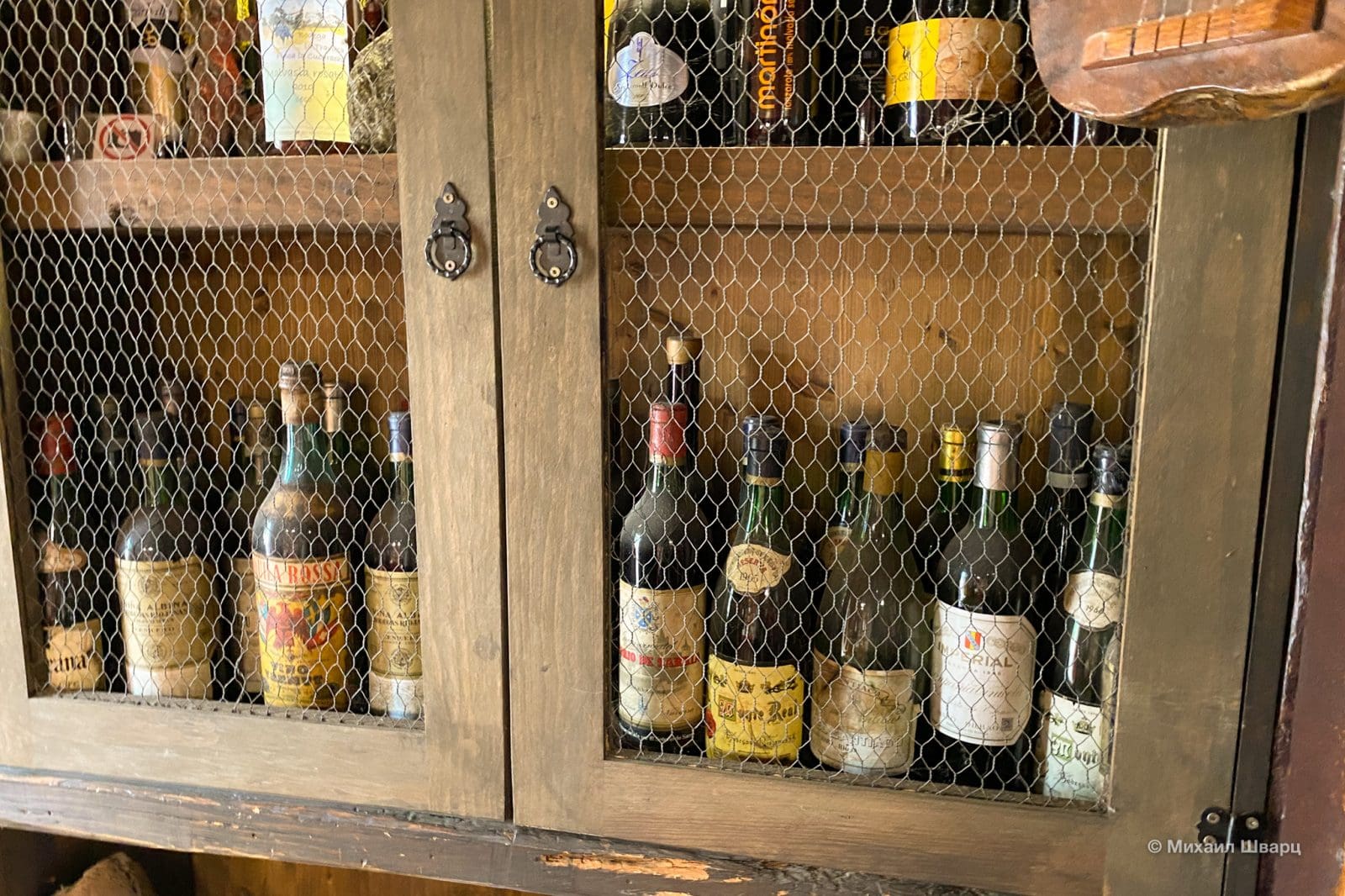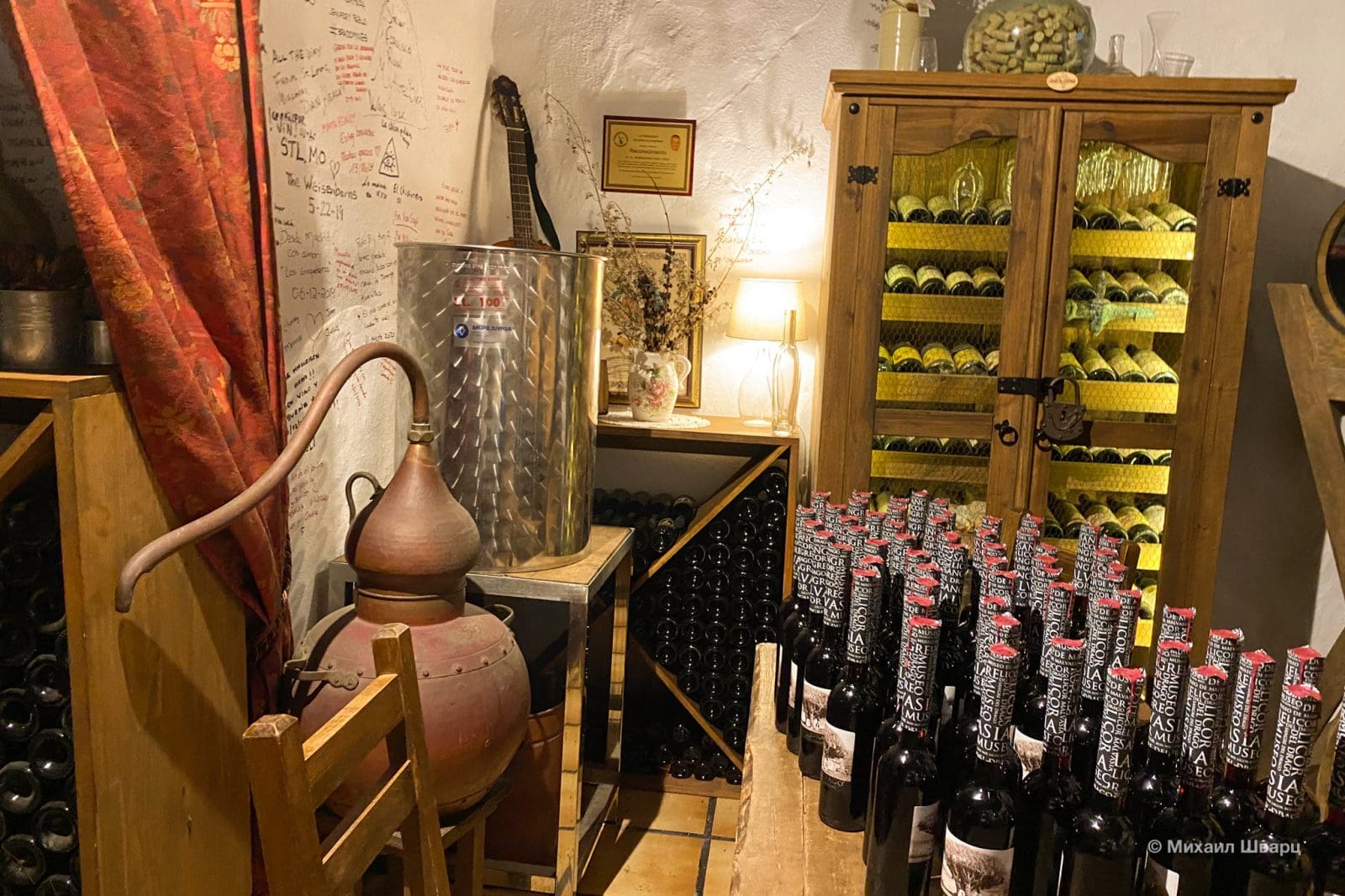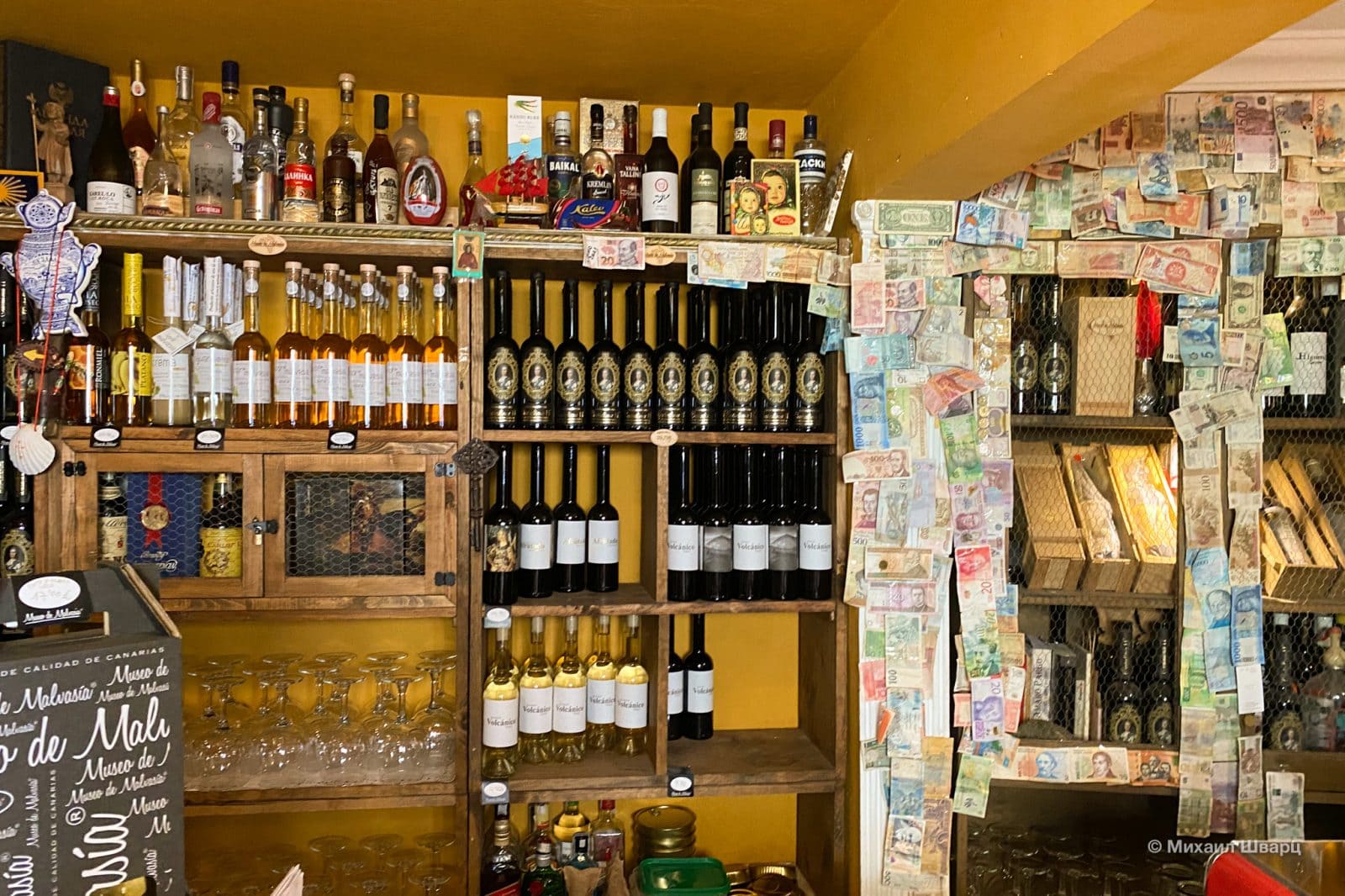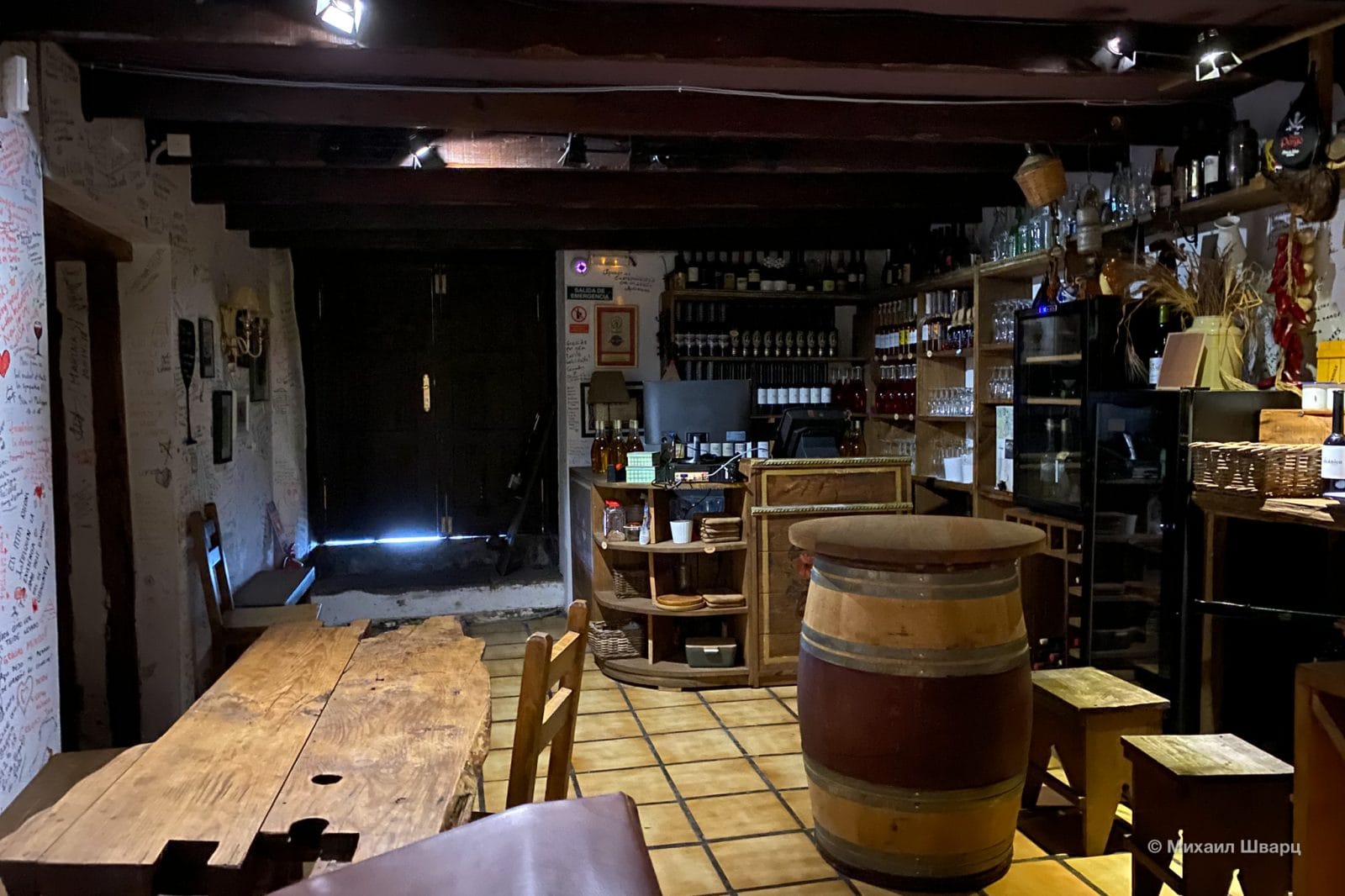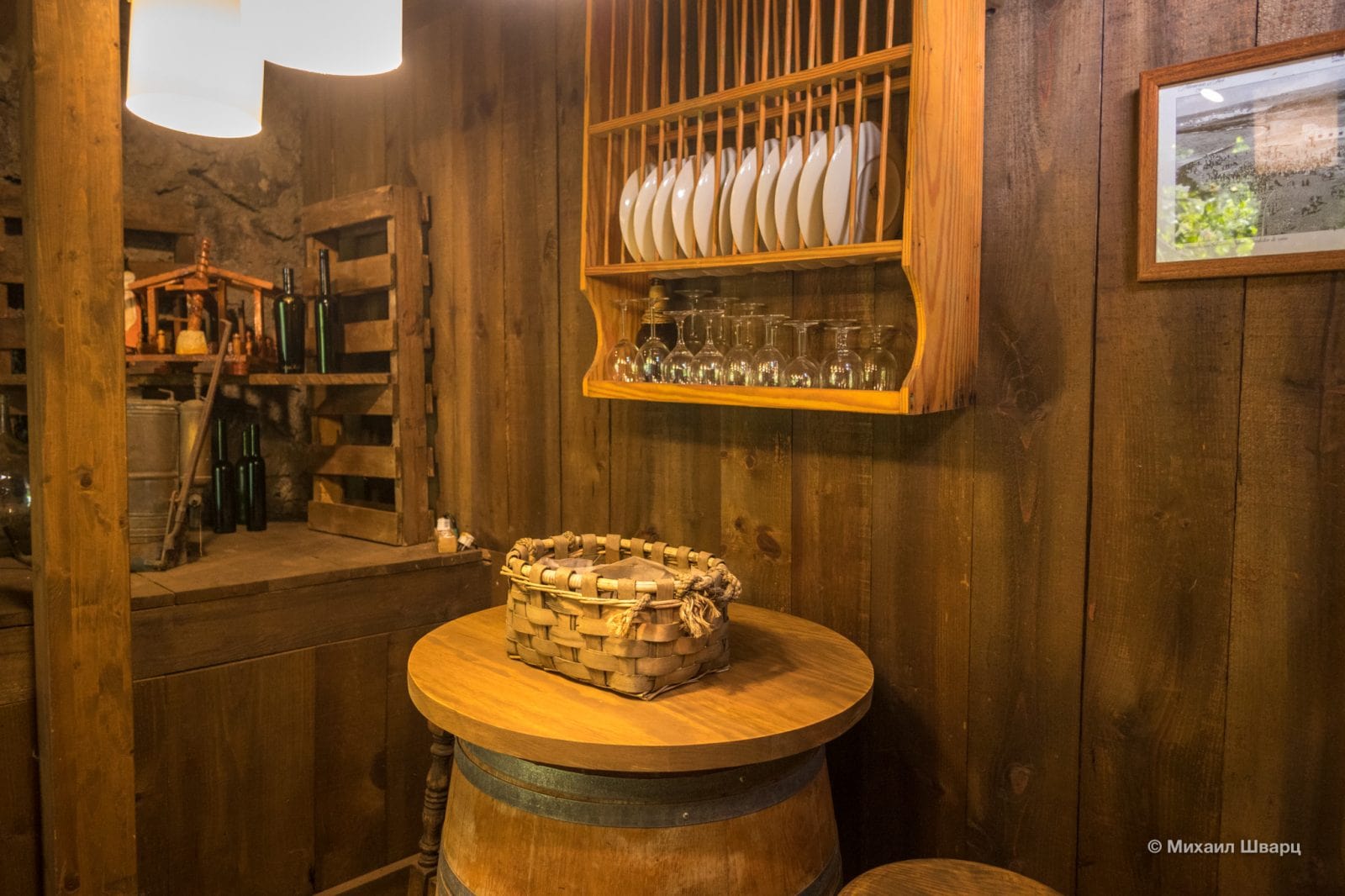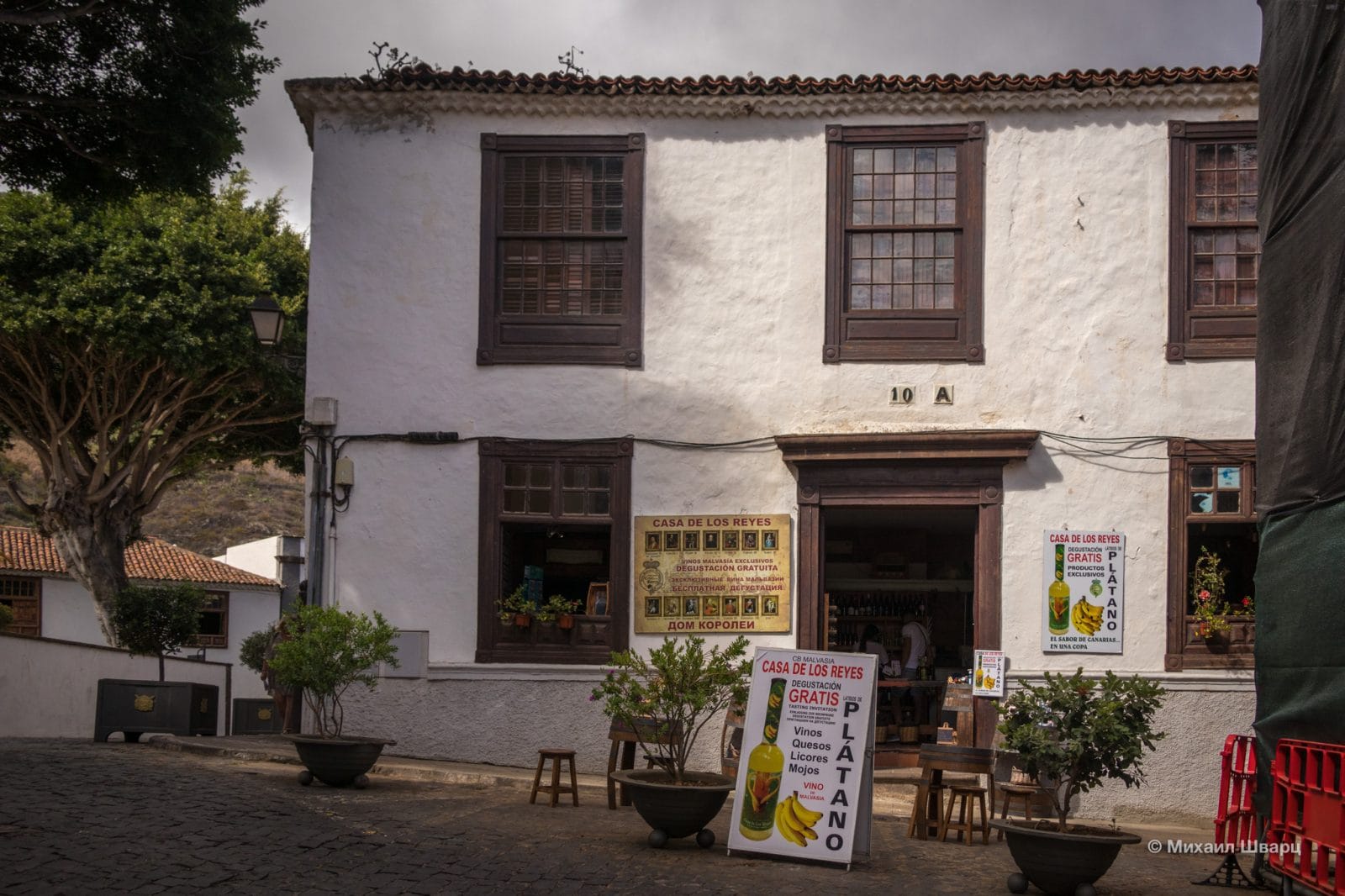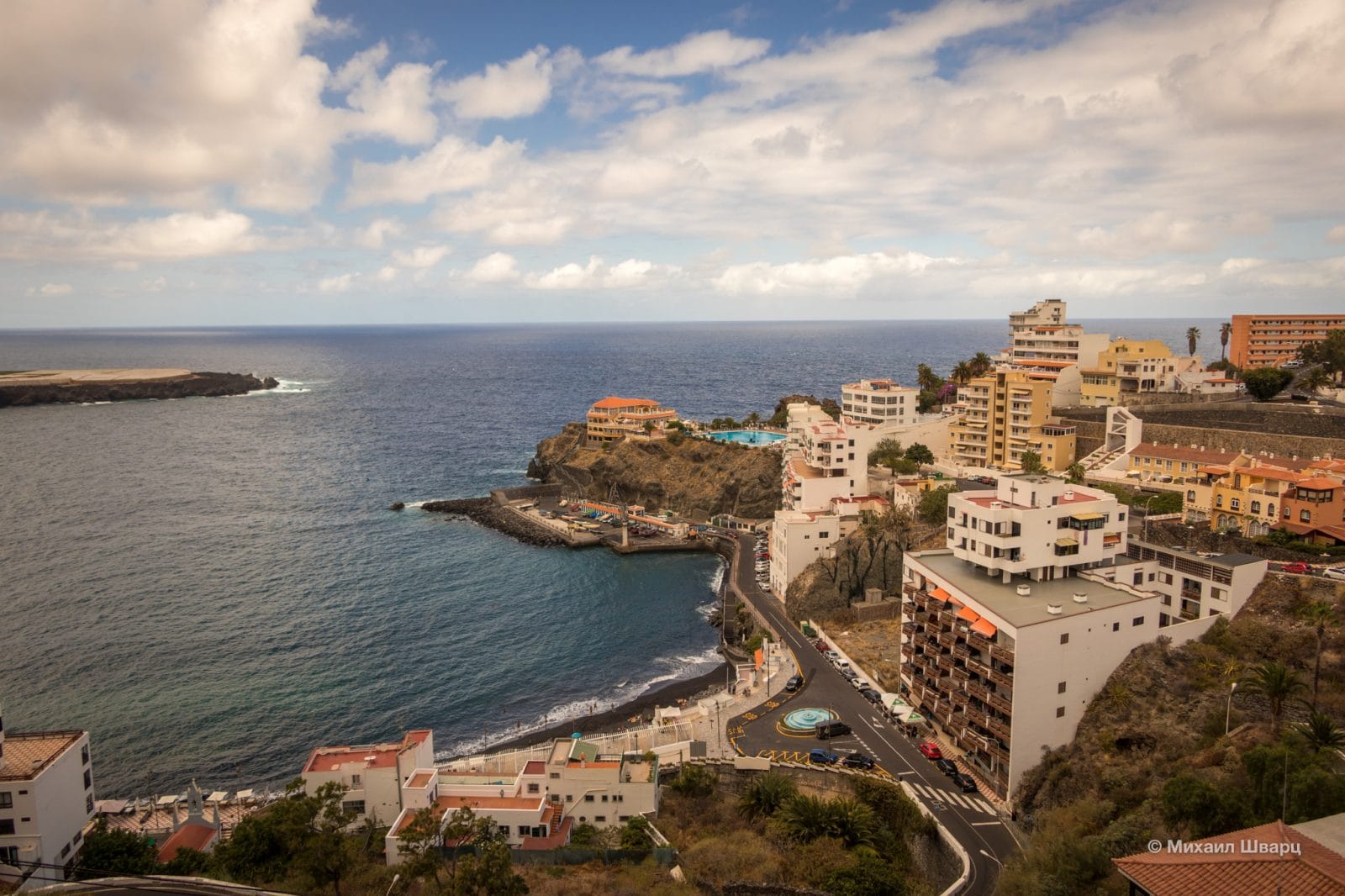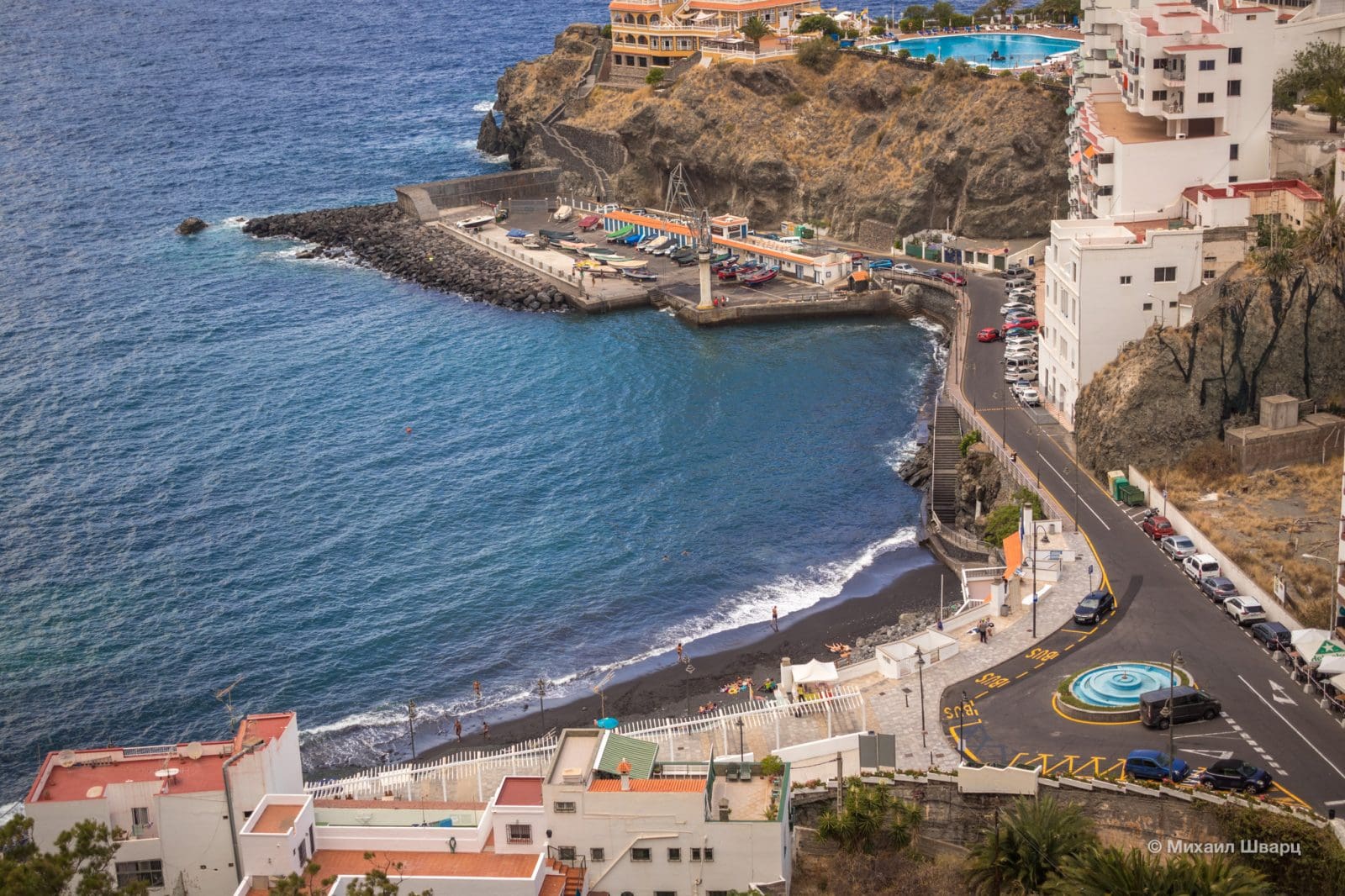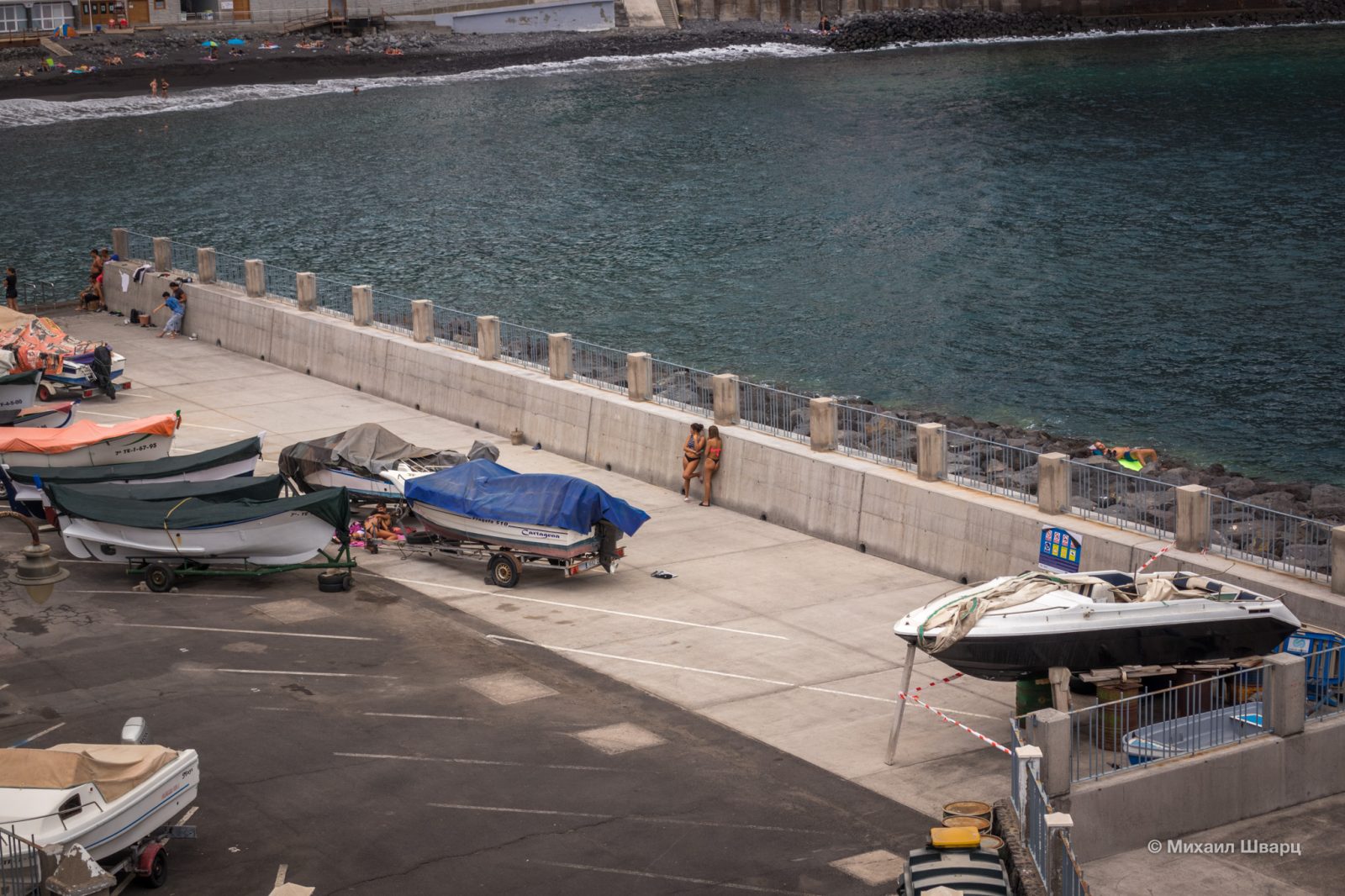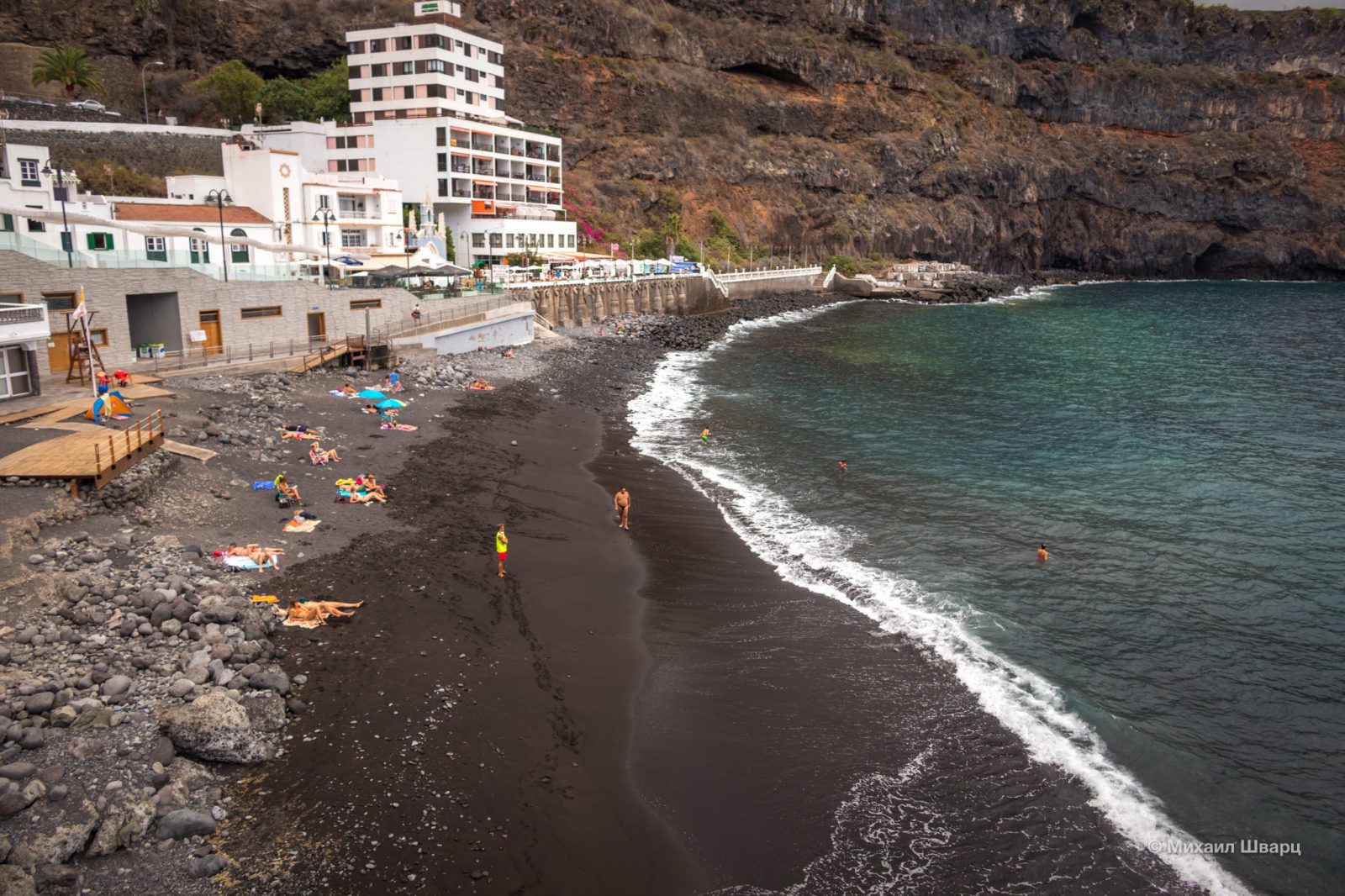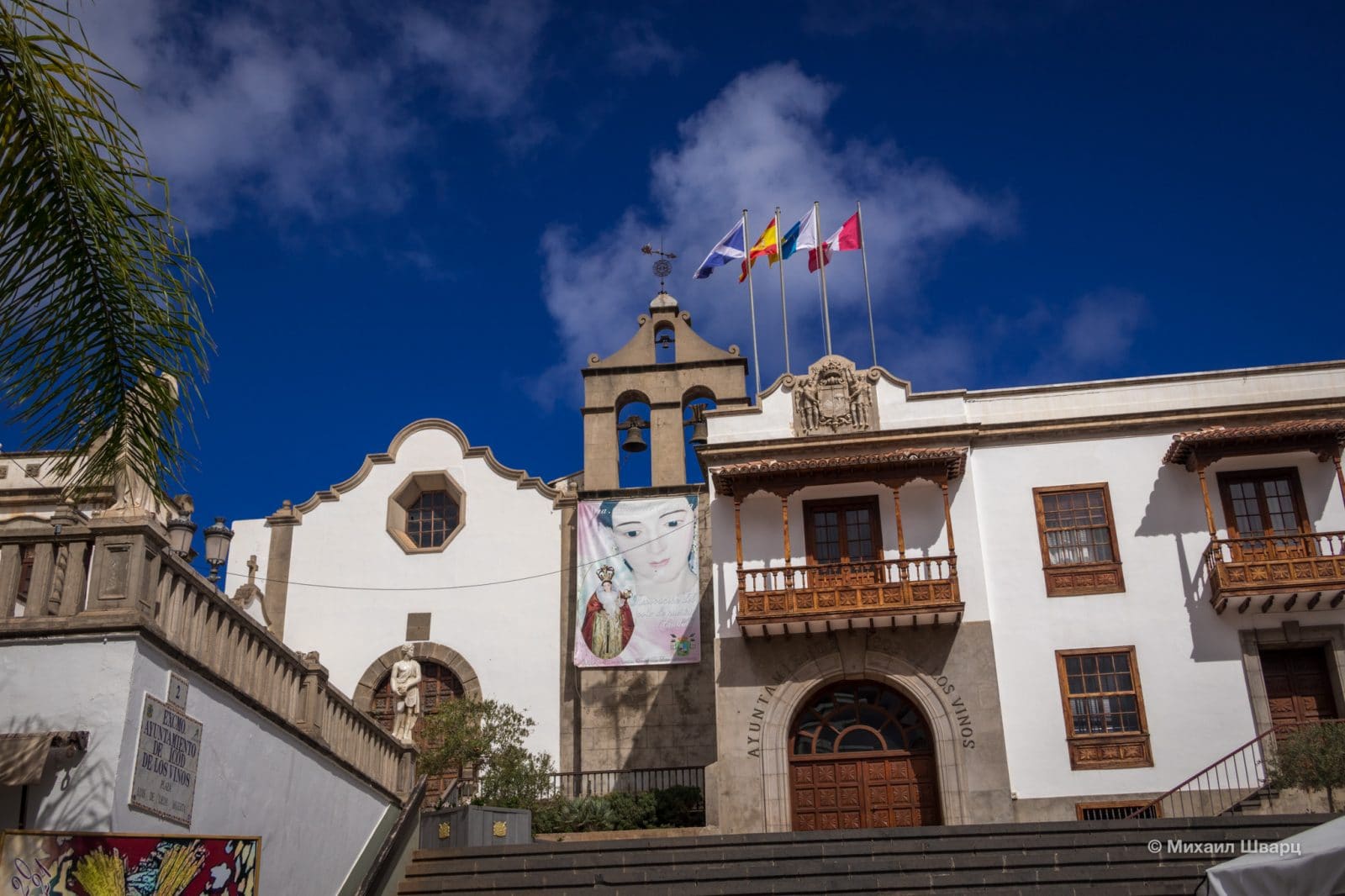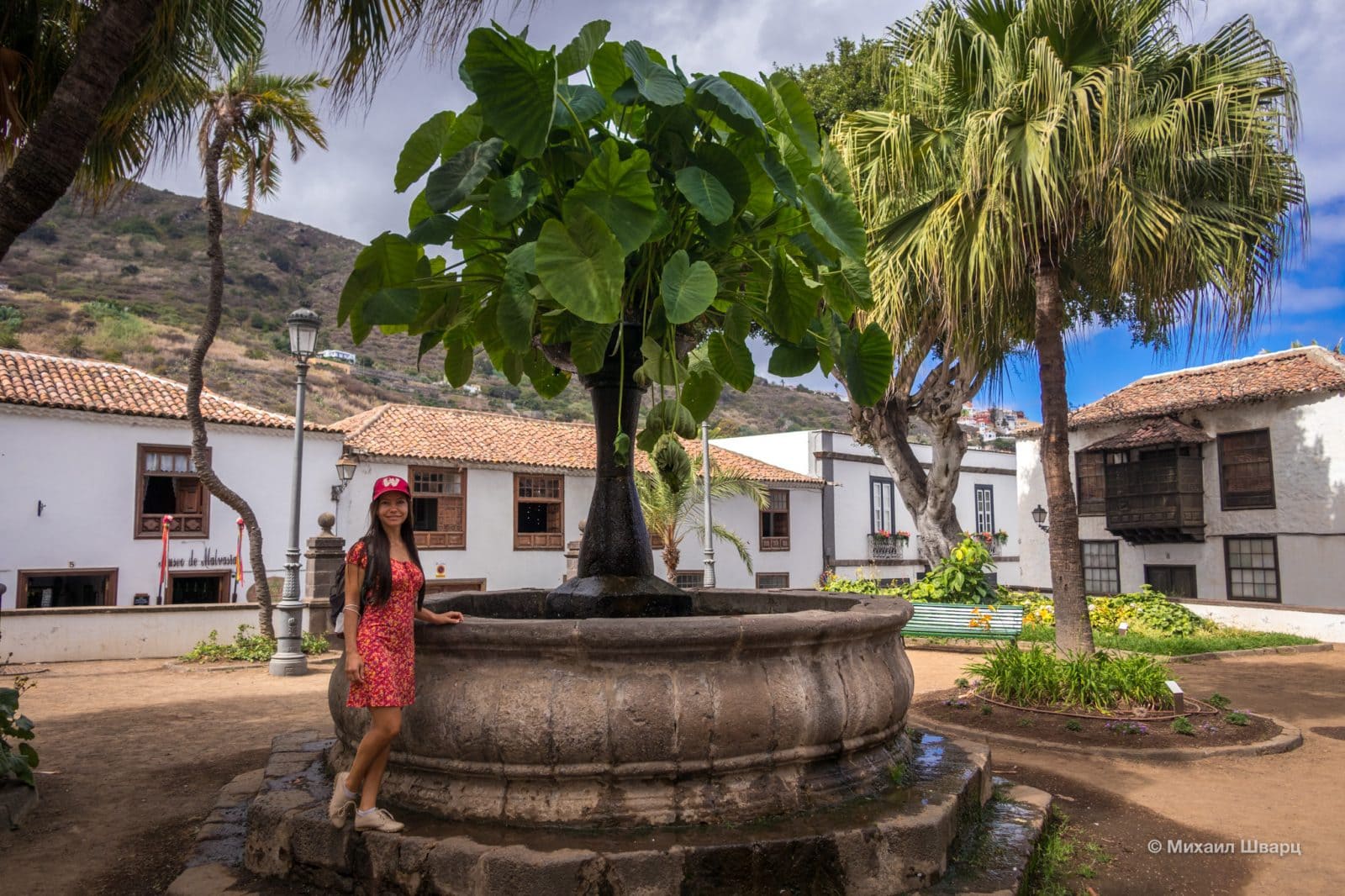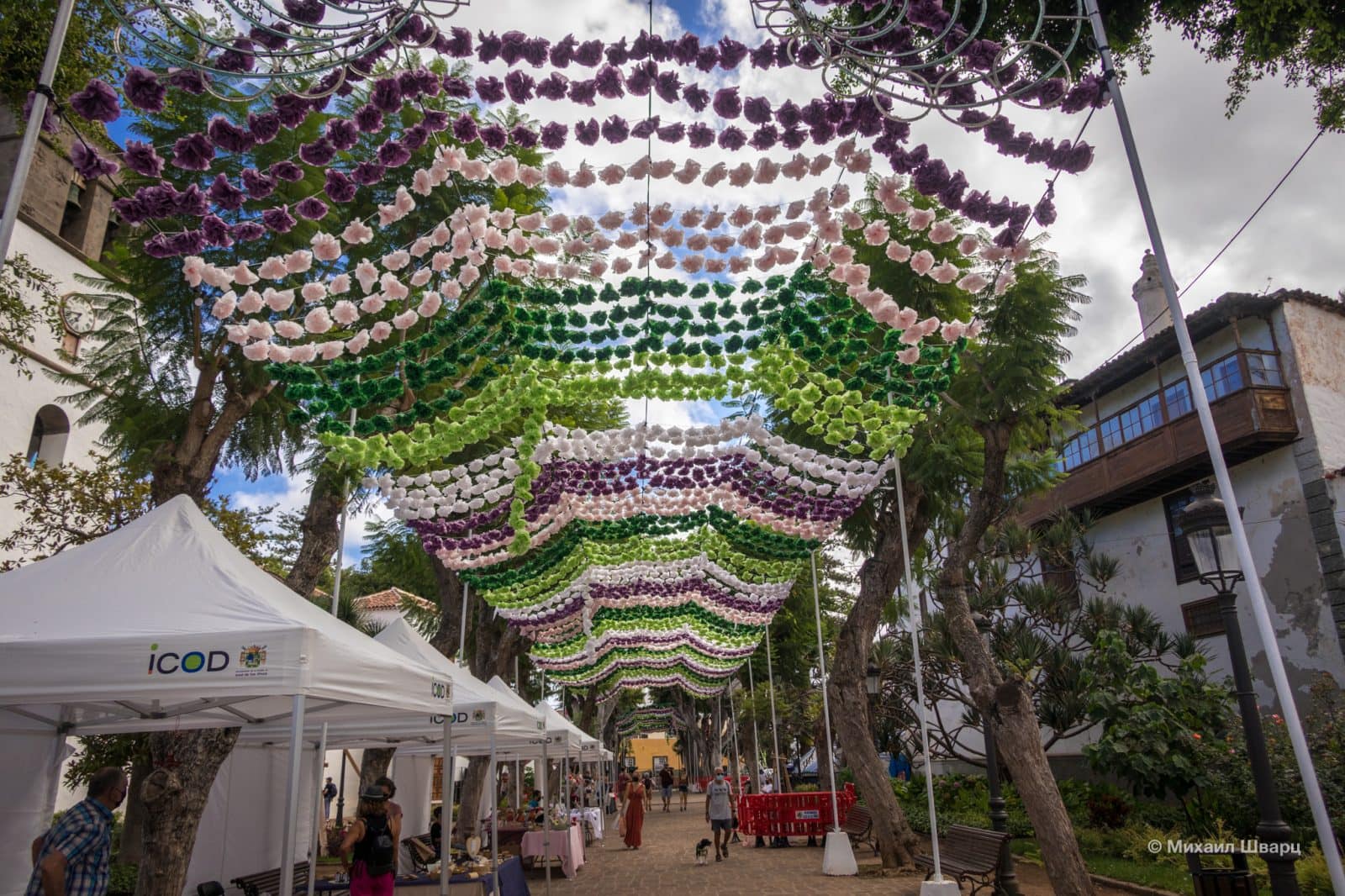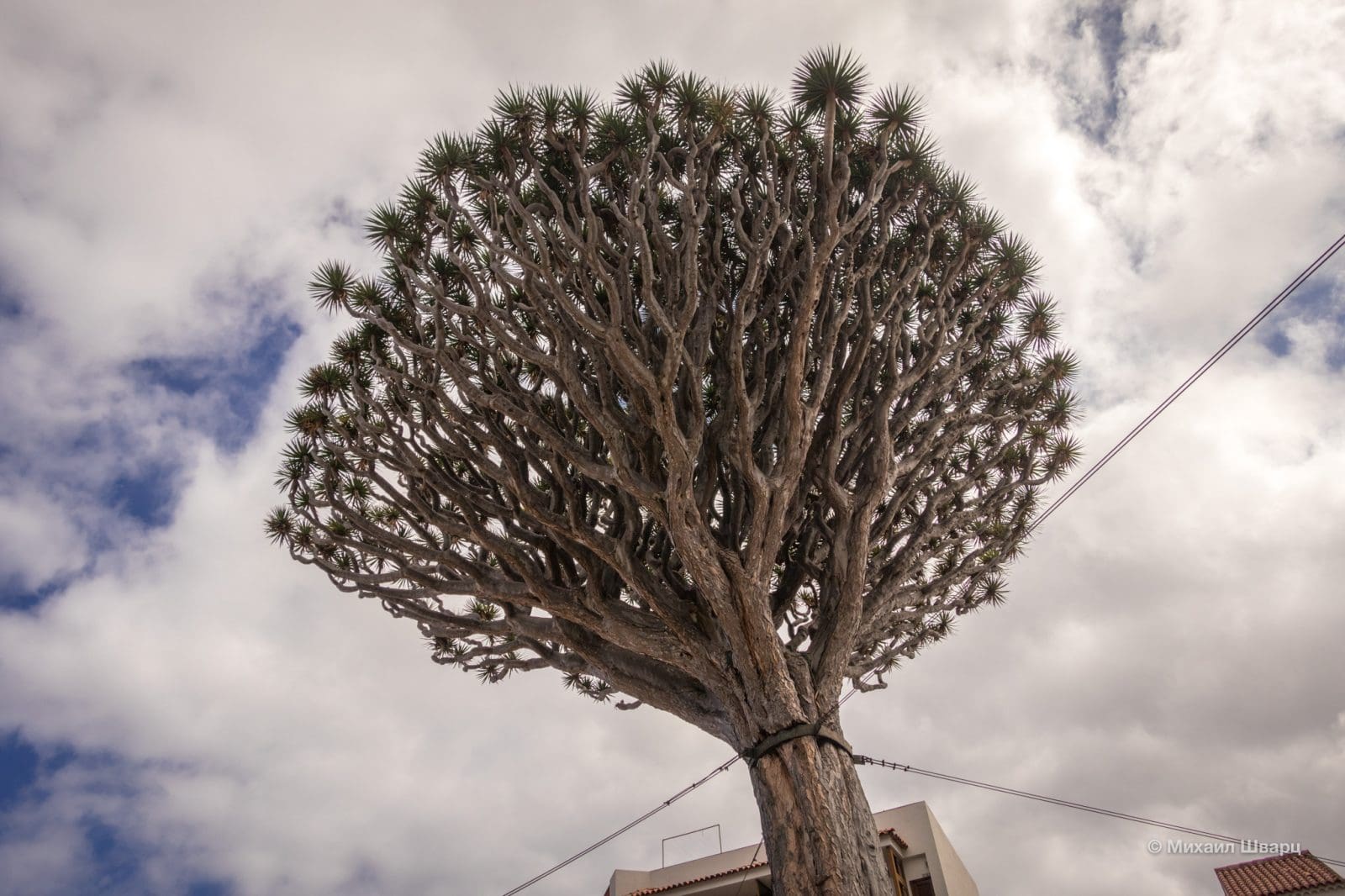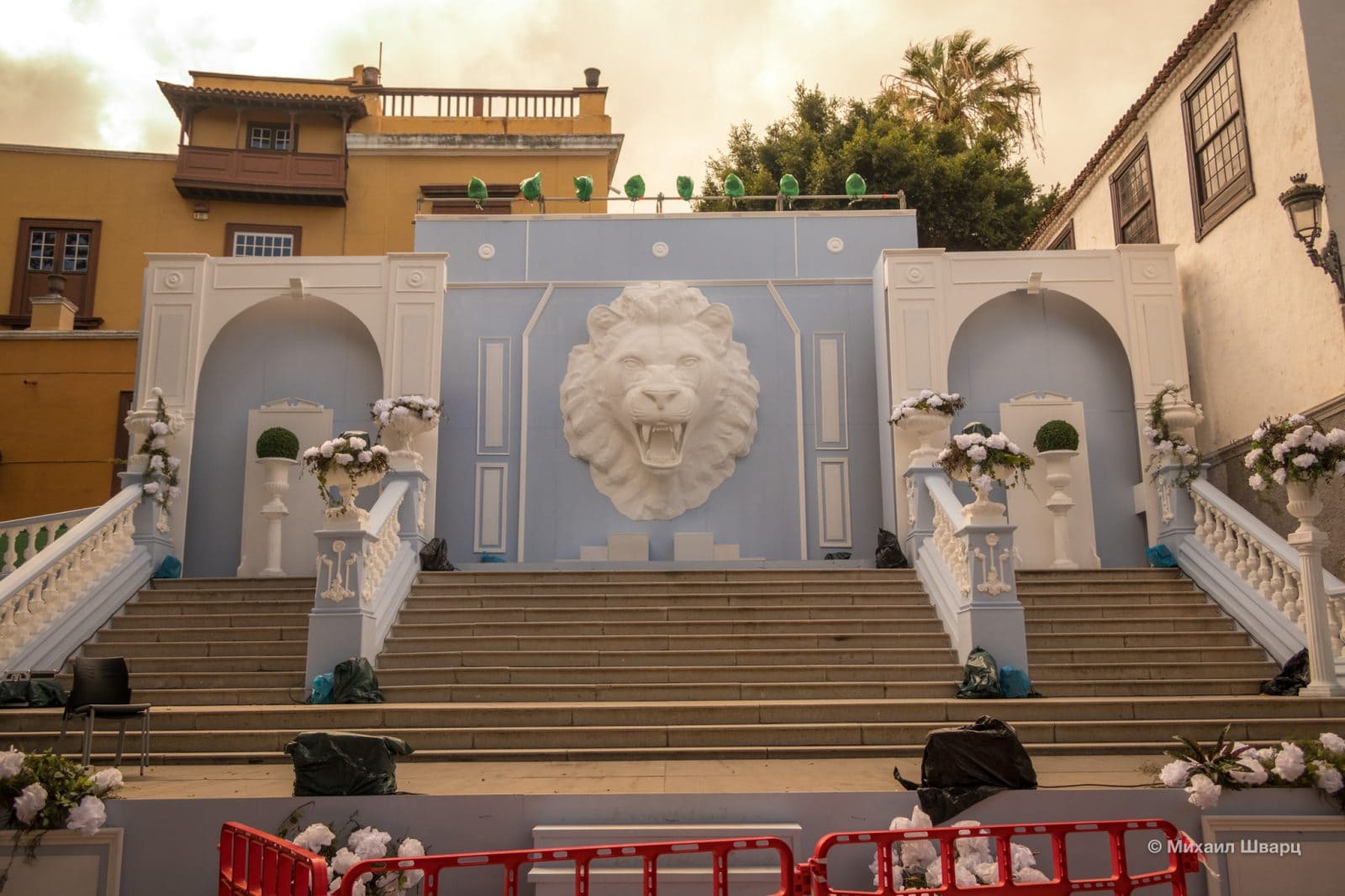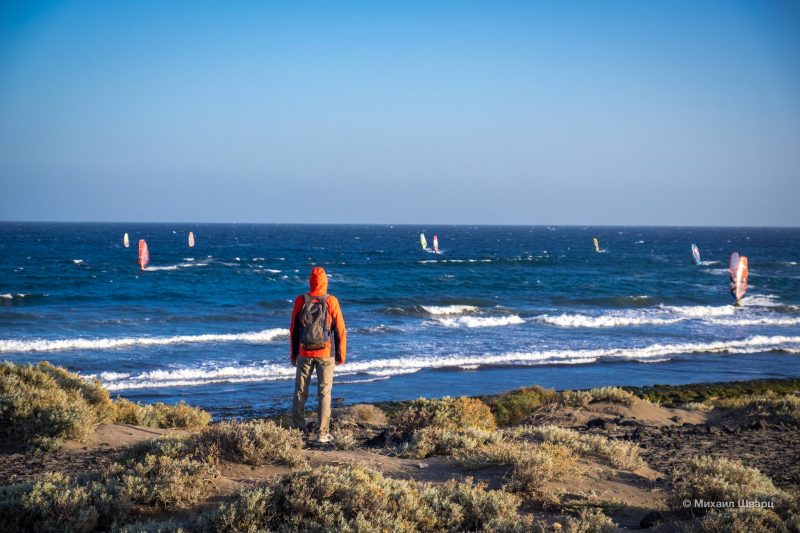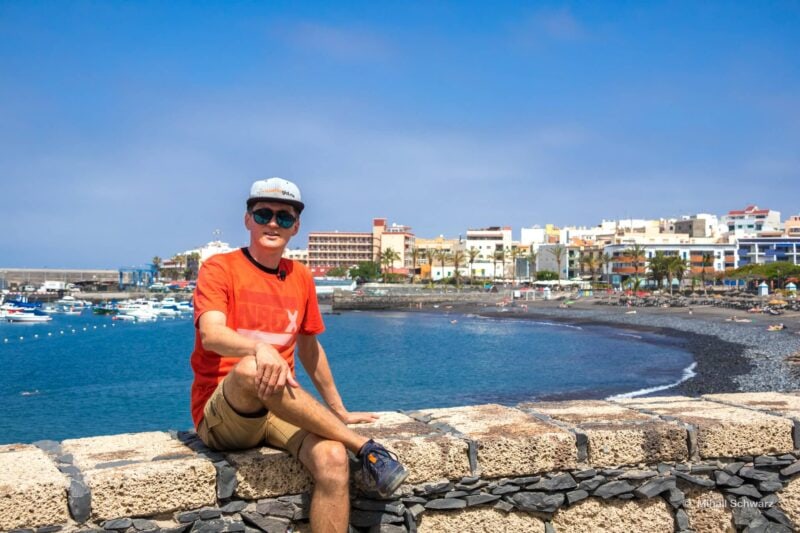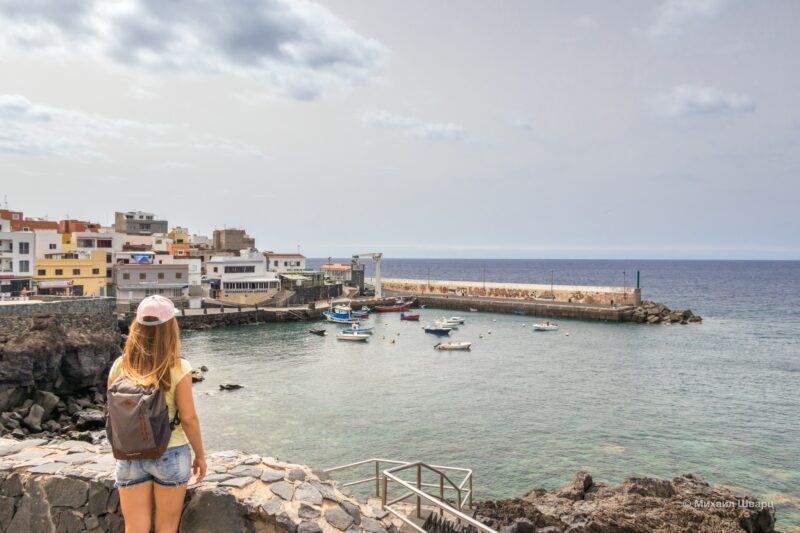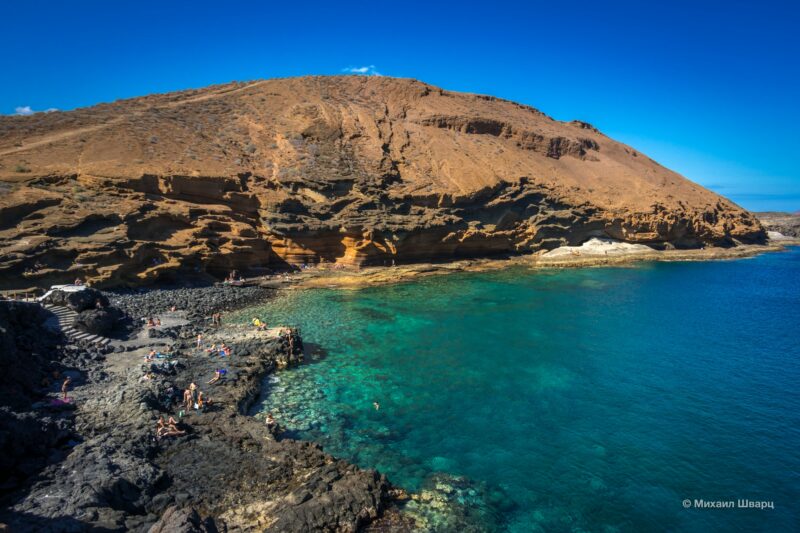
Icod de los Vinos (Icod de los Vinos) is a small Spanish town on the northwest of Tenerife with picturesque squares, cobblestone streets, and colonial-style houses from the 16th-18th centuries with traditional Canarian balconies. The town is small, and you can walk around it in a couple of hours. Its Old Quarter has been declared a site of cultural interest.
Icod de los Vinos is located on a slope that gently descends towards the ocean. The town’s streets offer views of Teide and Canarian pine forests. The town is surrounded by a fertile valley where the locals have established banana plantations, fruit orchards, and vineyards.
Icod de los Vinos is located at an altitude of 233 meters above sea level and covers an area of 95.90 square kilometers. It’s approximately 56 kilometers from the island’s capital, Santa Cruz de Tenerife. The population is just over 23,000. The residents of Icod are called “icodenses.”
Historical paragraph
According to the history told by the descendants of the Guanches and the chronicle written by the Spanish monk Fray Alonso de Espinosa, Icod was the first settlement of the Guanches on Tenerife. The town itself appeared in the 15th century, founded by the Conquerors and named Icod, which in the Guanche language means “fire, burning.” The addition “de los Vinos” appeared in the 16th century, highlighting the importance of wine production in the region’s economy.
Attractions
Dragon Tree Park
Observation Deck
Public Library
Malvasia Wine Museum
St. Mark's Beach
Drago Butterfly Garden
Banana Museum
Guanche Museum
Wind Cave
San Marcos Church
Pila Square
Dragon Tree
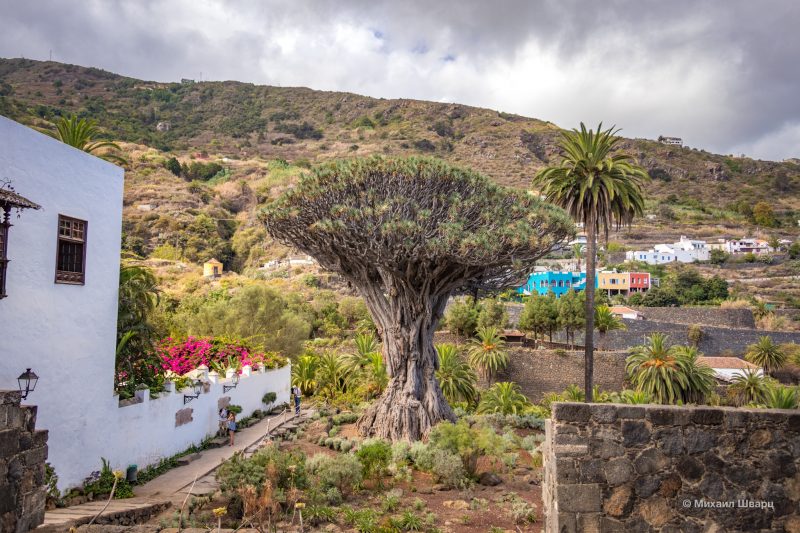
The most famous attraction in Icod is the Dragon Tree Park (Parque del Drago). Here grows the most famous tree on Tenerife – the Dragon Tree (Drago de Icod de los Vinos), a symbol of the city. It is so popular that its image adorns the city’s coat of arms, numerous paintings, and stamps. The Dragon Tree, or Dracaena draco, is a tree-like plant. It grows slowly and has no annual rings, so it’s impossible to determine its exact age. Until recently, it was thought to be around 1,000 years old. But according to more recent research, the age of the tree is approximately 300-800 years. The plant reaches a height of 18 meters and a circumference of 20 meters. In 1917, the Dragon Tree of Icod de los Vinos was declared a national monument.
The Dragon Tree has sharp leaves and red sap that resembles blood. The Guanches believed that these trees grew in places where dragons were killed, from their spilled blood. The native inhabitants of the Canary Islands used the plant’s sap in magical rituals, believing that the tree imparted wisdom; for healing and embalming. It is said that the Dragon Tree was once valued as much as gold for its ability to cure bleeding, various wounds, and dysentery.
In addition to the main attraction, the Parque del Drago also features other species of Canarian flora. There is also a small volcanic cave with ancient mummies of the Guanches.
To get closer to the tree, you’ll have to pay, but from the nearby viewing platform, it can be seen even better.
I wrote about the Dragon Tree here.
Public Library
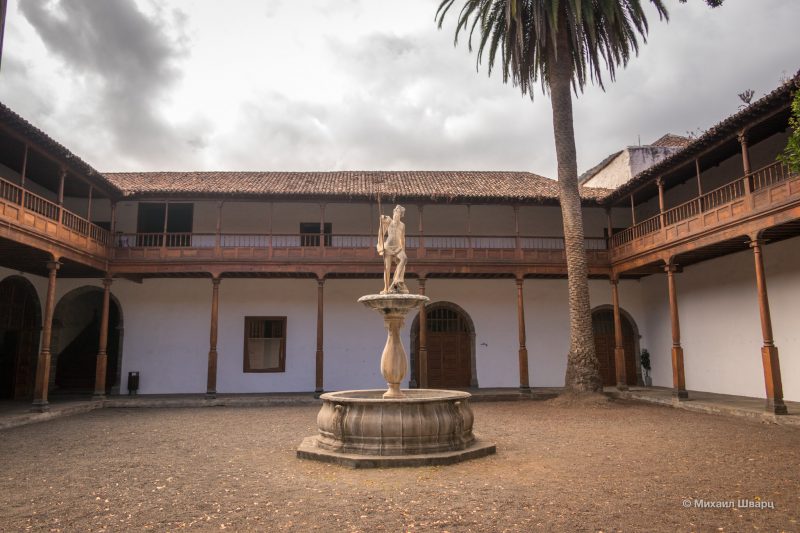
The Public Library of Icod de los Vinos (Biblioteca Pública de Icod de los Vinos) is one of the best on the islands. Its collection comprises approximately 13,200 volumes. The library occupies the building of a former Franciscan monastery, which was founded in 1641 with donations from wealthy families. The monastery ceased its activities in 1821 when the monks moved to La Orotava.
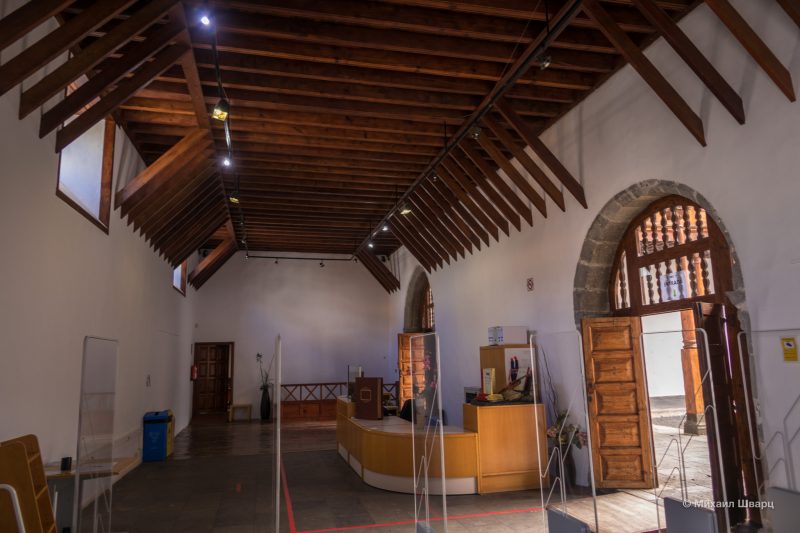
It’s worth visiting the library to see the unusual wooden ceiling in one of the rooms and the small, quiet inner courtyard with carved wooden balconies and a fountain with a sculpture of Neptune. It was gifted to the monastery by Italian travelers who found shelter in the San Francisco monastery after a shipwreck off the coast of Icod.
Malvasia Wine Museum
In Icod de los Vinos, there is a Malvasia Wine Museum (Muse de Malvasia). Malvasia is a grape variety originating from Greece. On Tenerife, the highest-altitude Malvasia grapes are grown. The vineyards are located at an altitude of 1,600 meters above sea level. The winemaking technology is interesting. The grapes are harvested in a semi-dried state, almost like raisins. The wine turns out concentrated, expressive, with a distinct character and flavor. The mild climate and volcanic soils give it a pleasant taste and delicate aroma. Malvasia is most often used to produce white wine, and less often, rosé. Fortified and dessert wines are considered traditional, but dry and semi-dry wines are also made here.
Malvasia was admired by Shakespeare, Byron, and Stevenson. It is said that Catherine the Great ordered the wine by the barrel and did not attend to state affairs without sipping a glass. Now anyone can try this legendary wine.
The small Malvasia Museum is located in an original, ancient building. It’s more of a tasting room than a museum. It is run by a married couple: the husband is a native Canarian, a hereditary winemaker, and the wife is Russian. At the museum, they’ll tell you a bit about the wine, let you taste several varieties, and offer local cheese as an accompaniment. We got a set of 5 wines + cheese for €7. You can purchase any wines you like right there. It can be stored for up to 30 years, and its cost only increases with each passing year. A good mini-investment!
The museum has a corner dedicated to Casanova. The seducer would dip cookies in Malvasia and treat the ladies to them. After eating a certain amount, they were ready for anything.
In addition to Malvasia, the museum features products from other local producers of wine, spirits, cheese, honey, and sauces.The Malvasia Museum is included in Olga’s tour:
San Marcos Beach
San Marcos Beach (Playa de San Marcos) is a small (160 m long, 40 m wide), but cozy beach with black volcanic sand. It is located in the village of San Marcos, which is considered the city beach of Icod de los Vinos. Playa de San Marcos is situated in a shell-shaped cove, with rocky shores that protect it from the wind. Therefore, there are no big waves here, and you can swim even in winter. The beach has all the necessary amenities, including showers, sun lounger rentals, and restaurants with sea views.
Nearby, there is a parking lot for 50 cars. A city bus runs to the beach. The drive from the center of Icod takes 10 minutes, while walking takes 40 minutes.
Drago Butterfly Garden
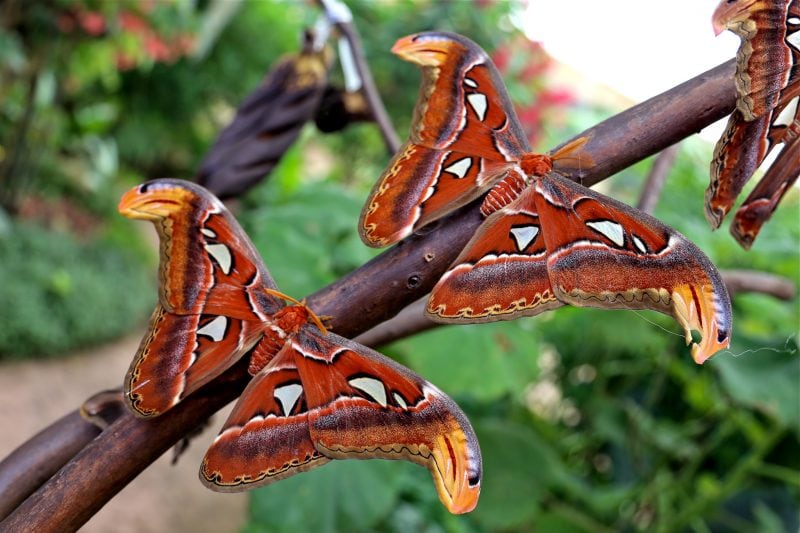
The Drago Butterfly Garden (Mariposario del Drago) is an amazing place. Here, more than 800 exotic butterflies from all over the world fly freely at the same time. In addition to adult butterfly forms, you can see other phases of their biological cycle—eggs, caterpillars, pupae—and observe courtship rituals and mating. Don’t miss the unique opportunity to witness a new beauty emerge from its pupa, spread its wings, and take flight. Approximately 150 different species appear in the park each year. However, they only live for 2–3 weeks.
The conditions inside the facility are the same as in the natural habitats of the butterflies: 80% relative humidity and a temperature of 24-29ºC.
At Mariposario del Drago, there are many bright flowering plants. Butterflies feed on them and reproduce on them. Each butterfly species requires a specific host plant for laying eggs and feeding caterpillars.
Find all the details about the Drago Butterfly Garden’s operations on the official website mariposario.com.
Banana Museum
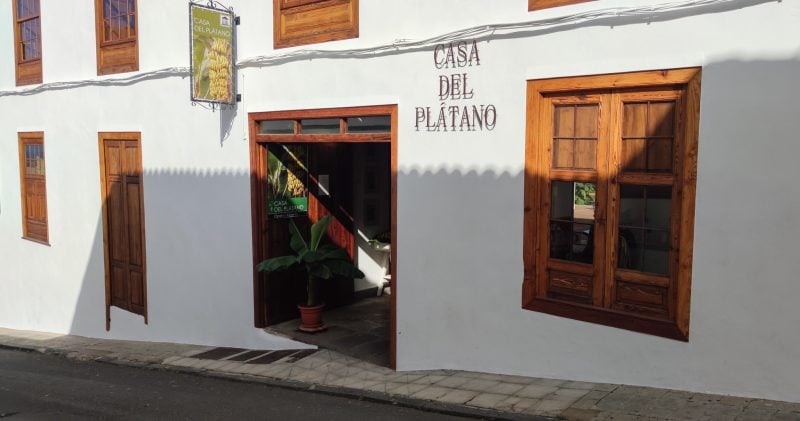
The Banana Museum (Casa del Plátano) was recently opened. It occupies a beautiful colonial-style building, which is adjacent to a banana plantation. In the first hall of the museum, in addition to entrance tickets, they sell banana marmalade, banana sauces, banana liqueur, and other products made from this plant.
The exhibition acquaints visitors with the history of the island and the development of the plantation. All exhibits are labeled in Spanish and English. You can watch a film about how bananas grow and the importance of their cultivation for the Canary Islands. Guides will take you through the banana plantation and tell you about the varieties cultivated on Tenerife.
After visiting the museum, on the way out, everyone will be treated to a banana. Check the website casadelplatano.com for current information.
Guanche Museum
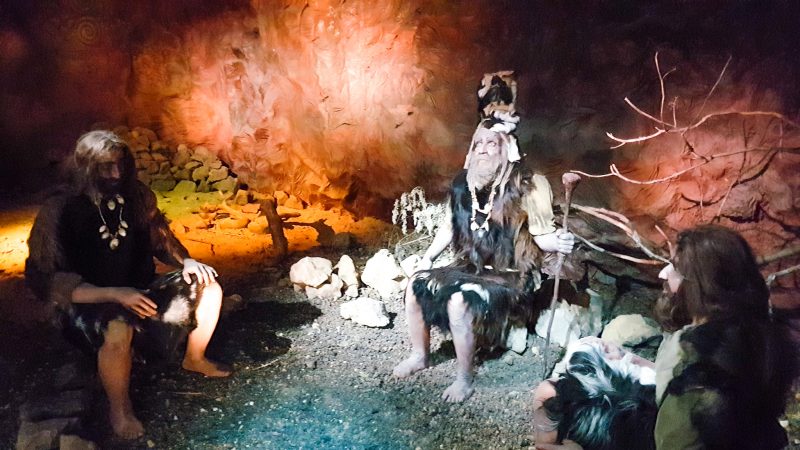
If you’re interested in learning more about the indigenous inhabitants of the Canary Islands, visit the Guanche Museum (Museo Guanche). It’s small, with only 4 rooms. There is an audio guide and Russian captions. You’ll learn about the rock writing, daily life, and traditions of the islanders, see the burial process, and discover mysterious artifacts.
Wind Cave

The Wind Cave (Cueva del Viento), or more precisely, the volcanic tube, formed 27,000 years ago during an eruption of the Pico Viejo stratovolcano. It is considered the largest in the European Union and the fifth-longest in the world, after the volcanic tubes in Hawaii. The length of the Wind Cave is over 17 km. Cueva del Viento consists of three different levels, each containing various geomorphological features. Inside the volcanic tube, mummies of the Guanches and remains of extinct animals were found. Tours are conducted through the cave.
Historic Center of Icod
The historic center of Icod includes the Church of San Marcos (Iglesia de San Marcos), Andrés de Lorenzo Cáceres Square (Plaza Andrés de Lorenzo Cáceres), Pila Square (Plaza de la Pila), San Francisco Monastery (Convento de San Francisco), Emeterio Gutiérrez Albelo House Museum (Casa-museo Emeterio Gutiérrez Albelo), Church of San Agustín (Iglesia de San Agustín), Casa de los Cáceres, San Antonio de Padua Hermitage (Ermita de San Antonio de Padua), and Angustias Hermitage (Ermita de las Angustias).
The Church of San Marcos is located on Lorenzo Cáceres Square. It was built in the 16th century on the site of a chapel. Inside, it houses the world’s largest silver cross, standing 2.45 m tall and weighing 48.3 kg.The Plaza de La Pila (Plaza de La Pila) is surrounded by ancient houses. Among them, the Casa de Los Cáceres stands out. In the center of the square, there is a fountain crowned with a plant. Nearby stands a Dragon Tree, secured with metal cables. Tourists eagerly take photos in front of it. Around Plaza de la Pila, there are several wine and souvenir shops. 100 m from the square, another Dragon Tree grows. You can approach it up close, and it’s free.
Festivals
San Andrés Board Festival
On November 29 and 30, the residents of Icod de los Vinos celebrate the San Andrés festival, which coincides with the opening of the first bottle of young wine and has no religious origin. It simply coincided with St. Andrew’s Day.
On November 29, the narrow streets of the town turn into a real track for high-speed descents. Locals on homemade wooden boards zip through them like sleds, and at the finish line, they crash into car tires at full speed. To increase their speed, participants grease their boards with machine oil or ski waxes. This is how the folk festival of San Andrés Board Races (Tablas de San Andrés) is celebrated.
This tradition appeared in the 16th century when it was necessary to transport wood from the upper part of the town to the carpentry workshops located in the lower part. The locals managed to preserve the custom until today, albeit in a somewhat modified form.
In the evening of November 29, the New Wine Festival begins, which continues the next day. Wine cellars open their doors and uncork the first bottles of the new vintage. This is accompanied by tasting roasted chestnuts.
Los Hachitos
The Los Hachitos festival is celebrated on June 23. Its history dates back to primitive times when the Guanches used torches to light their way in the dark. During the summer solstice, they lit them to celebrate the longest day of the year.
“Hachos” are 2-3 meter-long wooden torches decorated with branches, flowers, and ribbons. As night falls, bonfires are lit, and a procession with music and dancing sets off from La Vega to El Amparo. Smaller torches are known as “hachitos.” They are used to create light patterns on the hillside or rolled down the slope, depicting a flow of lava.
Where to eat in Icod de los Vinos?
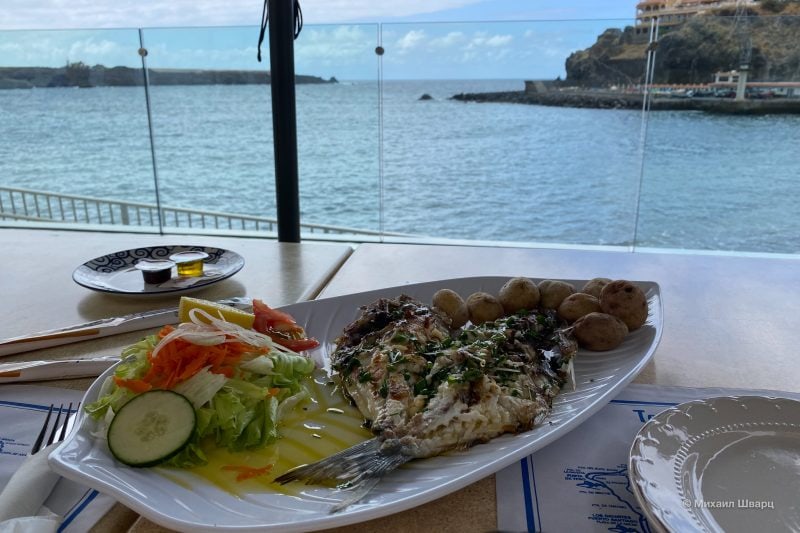
Among the main dishes of the Icod de los Vinos cuisine are Canarian-style potatoes (Papas arrugadas, “wrinkly potatoes”) with cilantro sauce mojo verde or hot mojo picón sauce, salted fish, grilled meat, wines, and homemade cheeses. In Icod, you will also find a great variety of sweets to try. For example, the bienmesabe dessert – rice with honey (arroz a la miel); piononos – a pastry with banana; leche asada (literally “roasted milk”) – a dessert made of milk, eggs, honey, and pepper.
I recommend visiting the following restaurants:
Hotels in Icod de los Vinos
It’s more reasonable to rent accommodation in the upper part of Icod de los Vinos for a lower price. But with this approach, it’s necessary to rent a car.
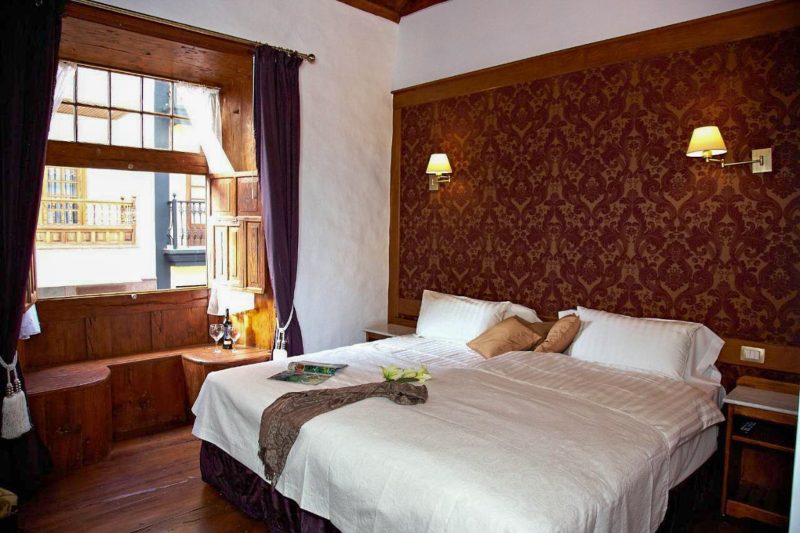
Hotel Emblemático San Agustin – a hotel in the historic center, occupying a 18th-century building.
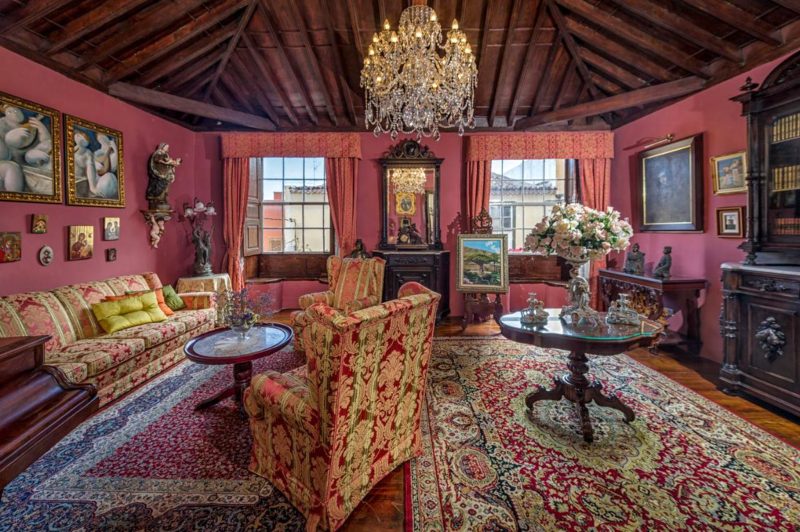
Hotel Emblemático San Marcos offers a unique opportunity to stay in the atmosphere of a 19th-century historic mansion! It’s 15–20 minutes to the ocean and 5 minutes to the bus station.
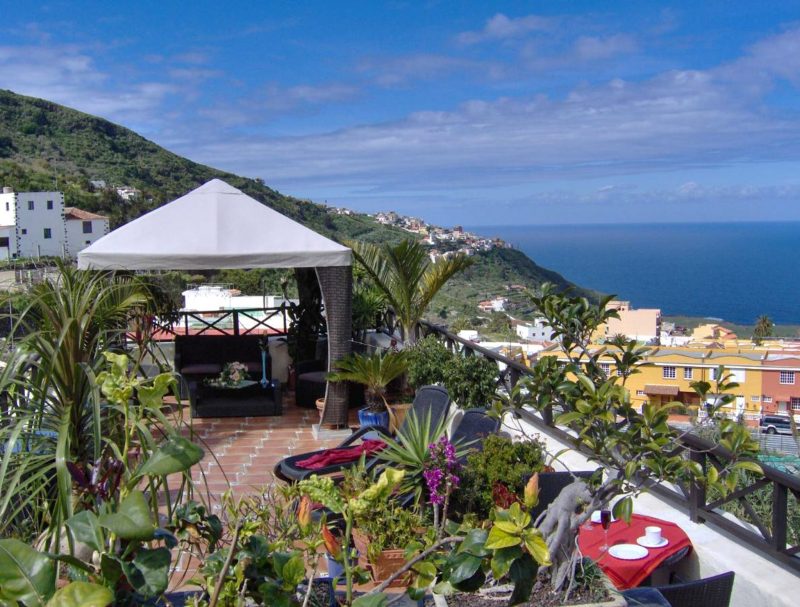
Apartamentos Monasterio de San Antonio – apartments located in an old building of a former monastery with a traditional inner courtyard. Guests have access to a sun terrace with impressive views of the sea and mountains.
How to get to Icod de los Vinos
From Costa Adeje
From the south of Tenerife to Icod de los Vinos, you can take bus 460, which departs from the Costa Adeje bus station (Estación de Guaguas). The journey will take 1 hour 31 minutes (77 stops). Get off at the final stop Estación Icod (T). But note that the route passes through the mountains and winds quite a bit. But it’s scenic!
From Puerto de la Cruz
In Puerto de la Cruz, get on bus 363 at the Tucán stop, heading towards Buenavista del Norte (T). The ride takes 47 minutes (48 stops). Get off at Estación Icod (T).
- Икод-де-Лос-Винос
- Icod de los Vinos
- site
- GPS: 28,368842 -16,720871

